
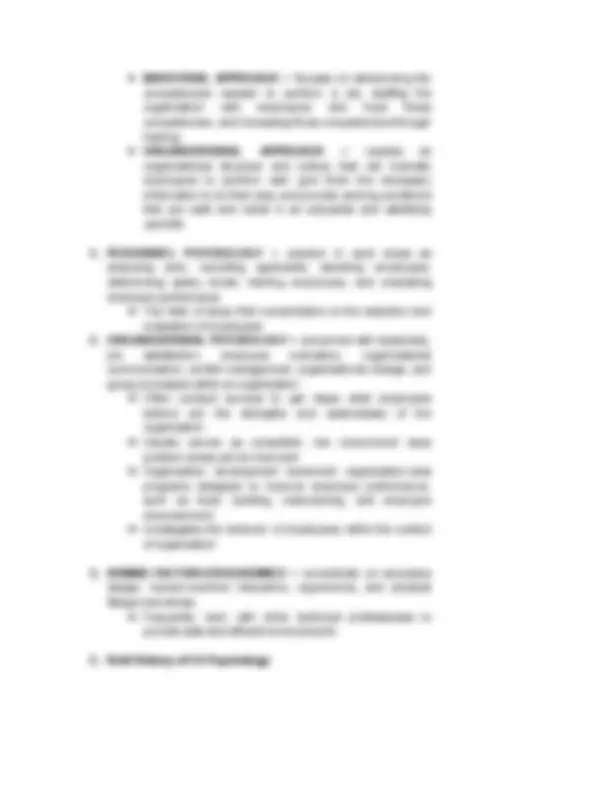
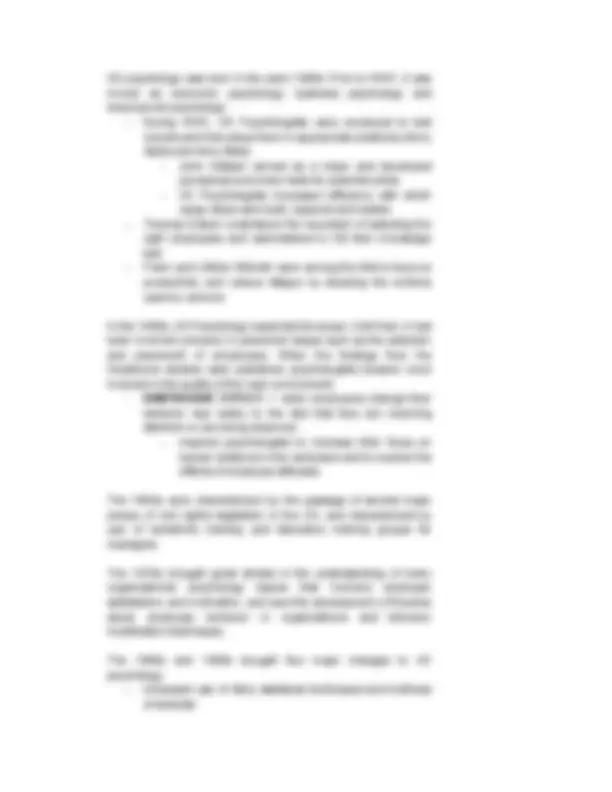
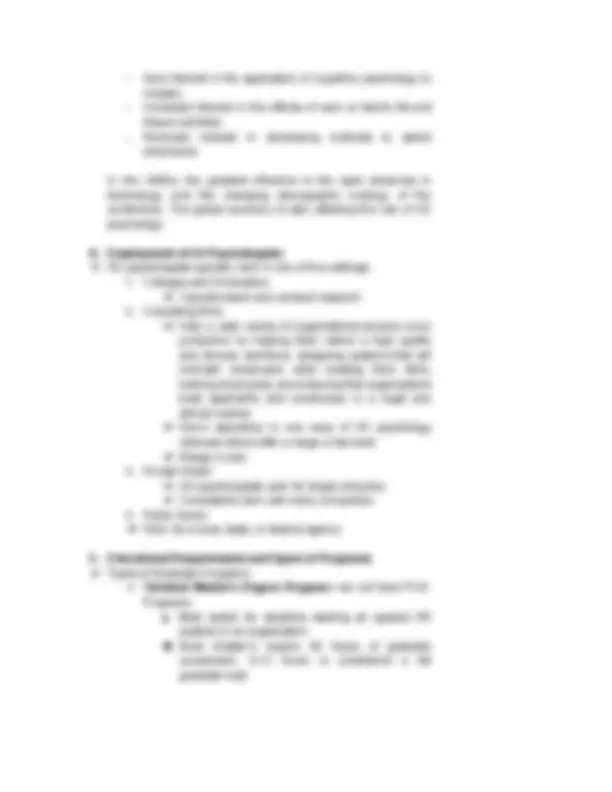
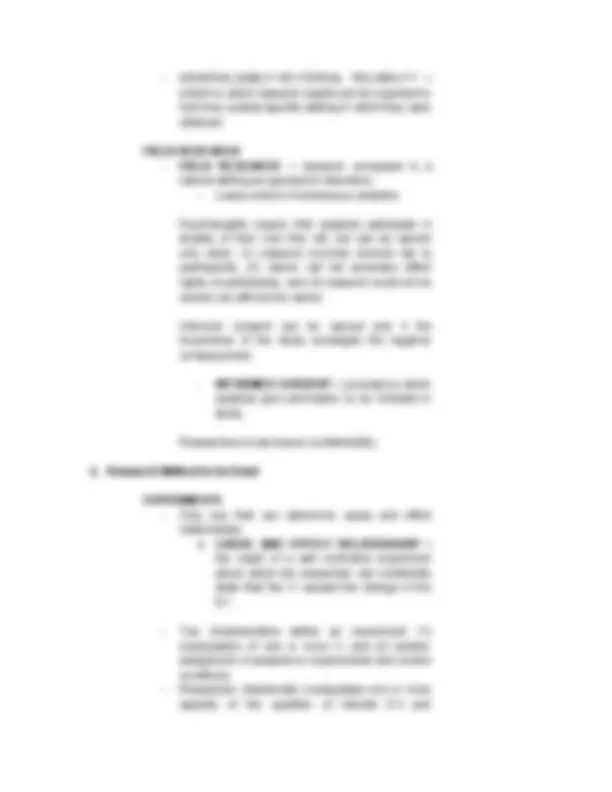
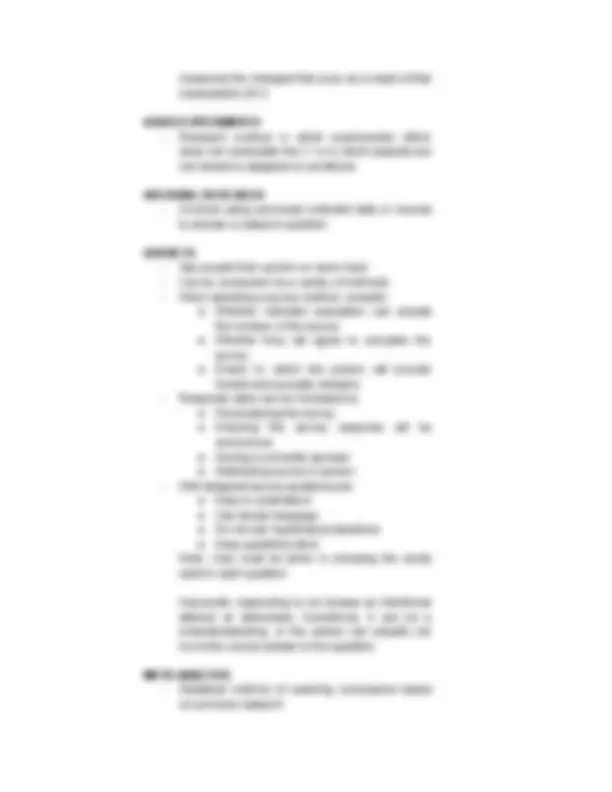
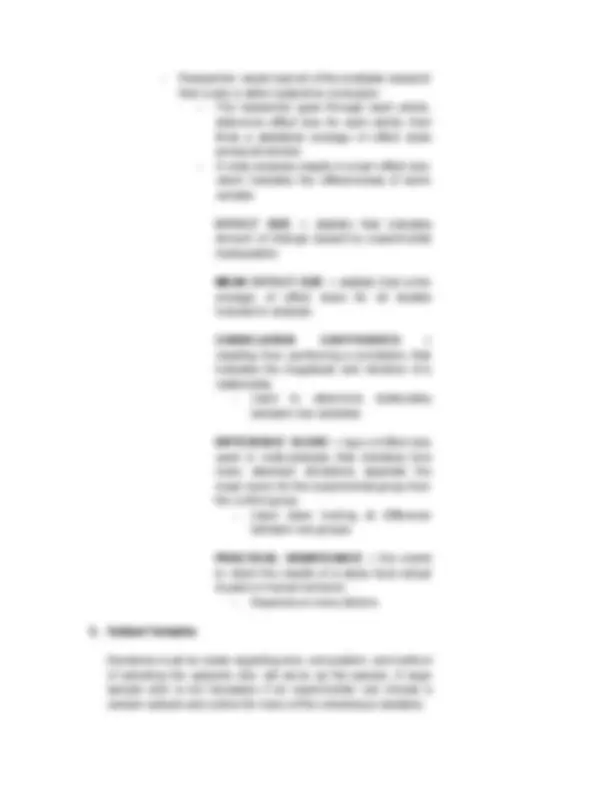
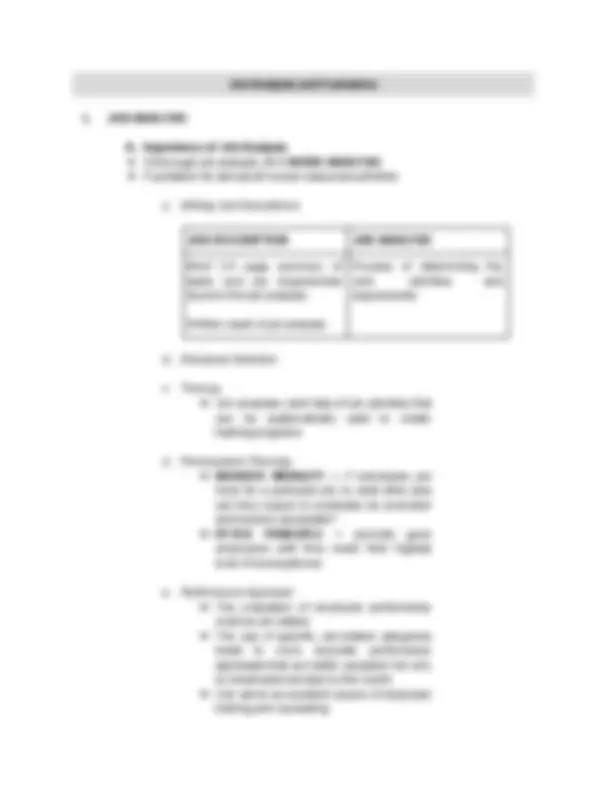
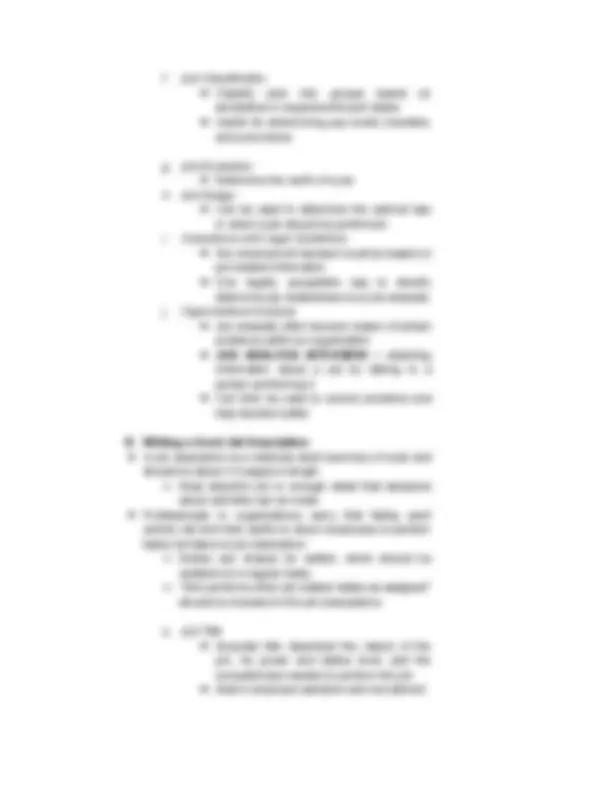
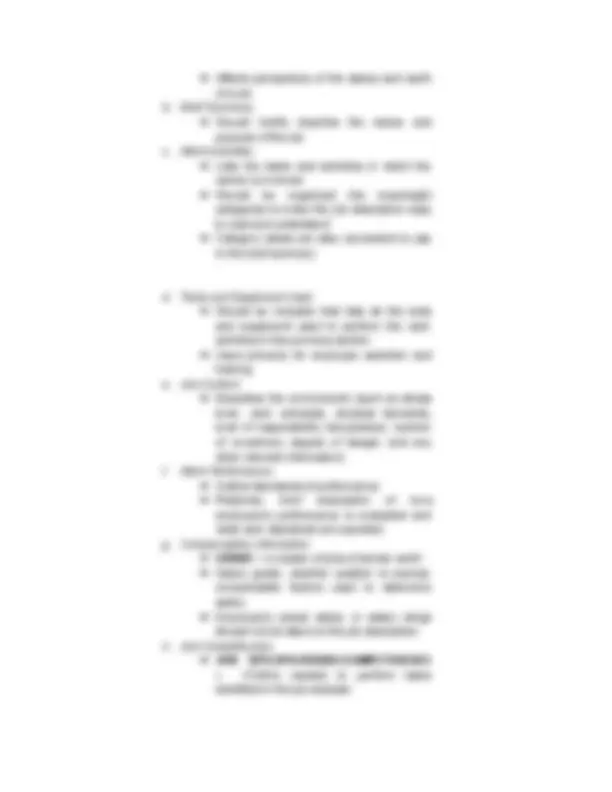
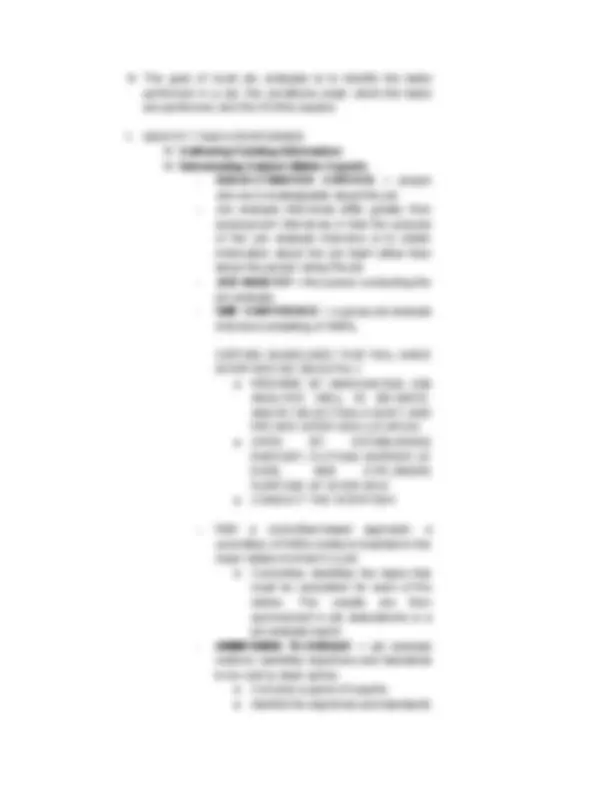
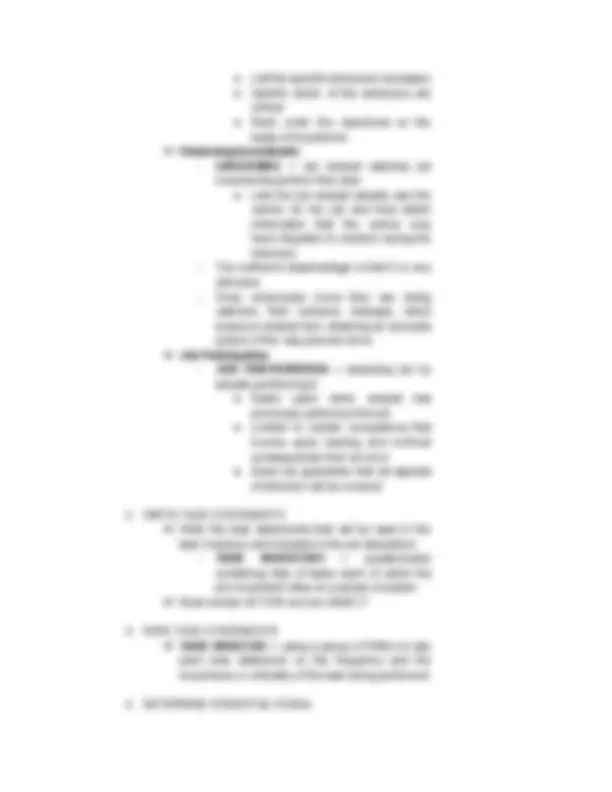
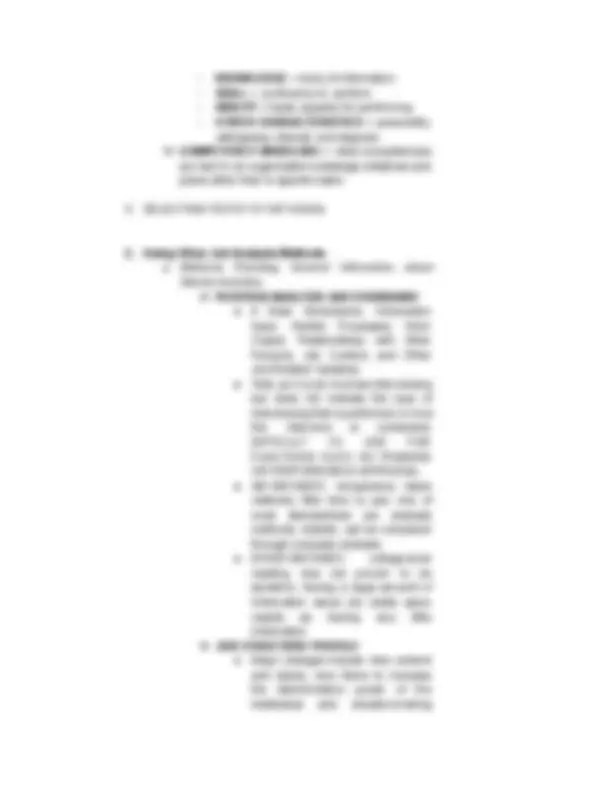
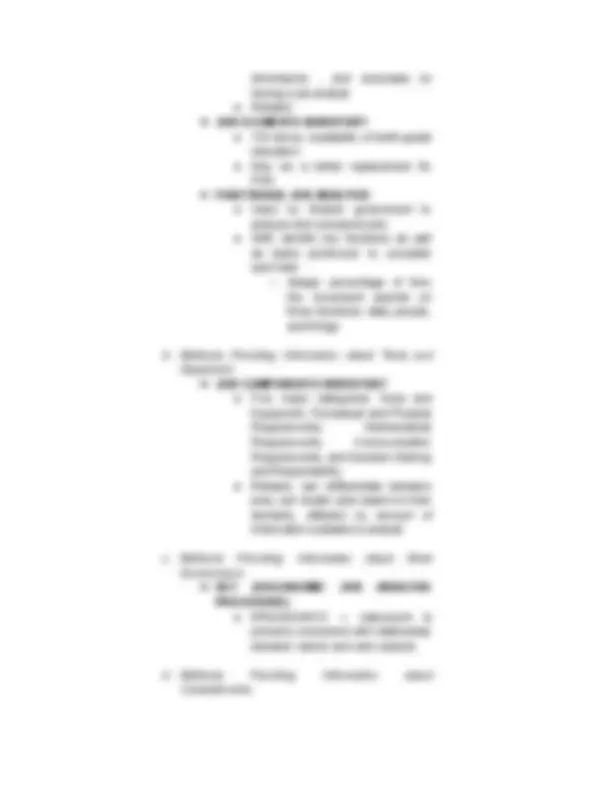
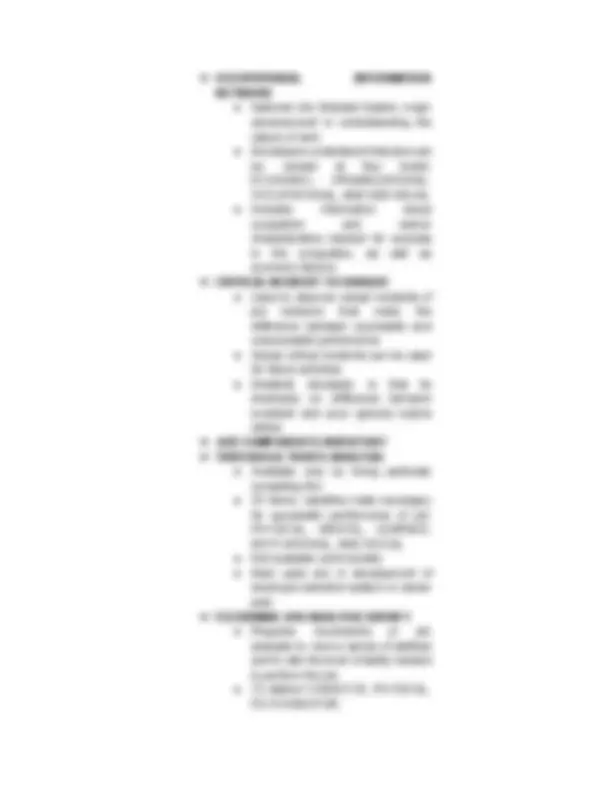
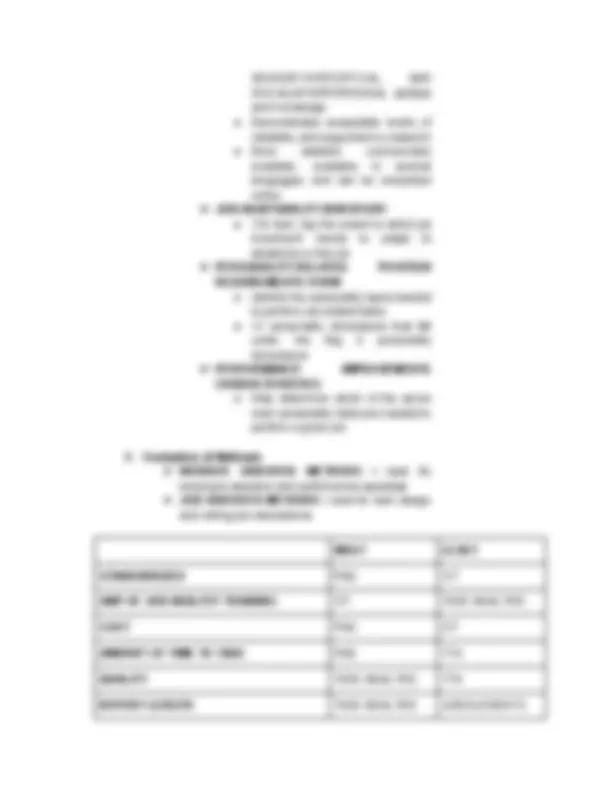
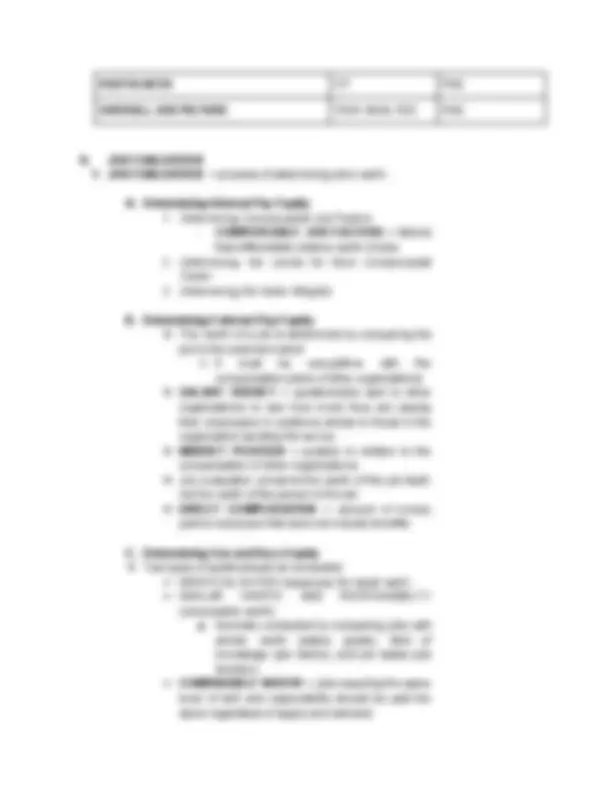
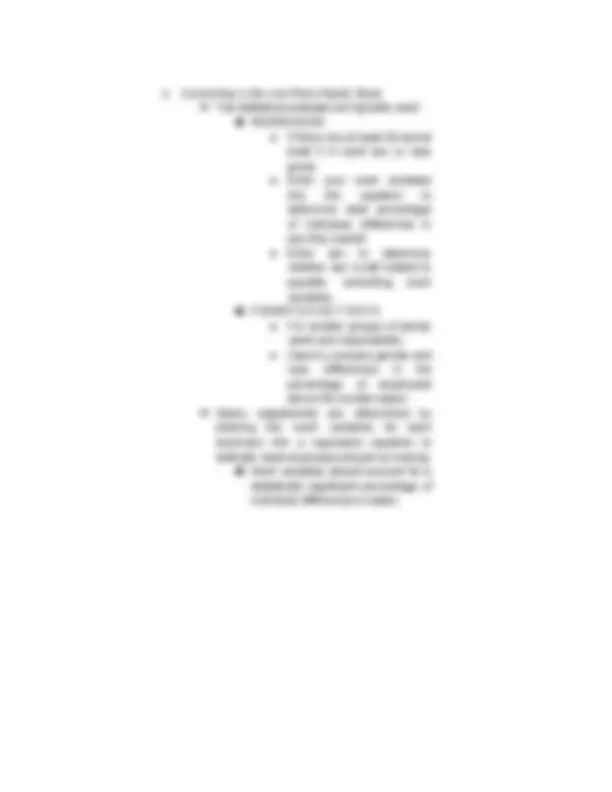
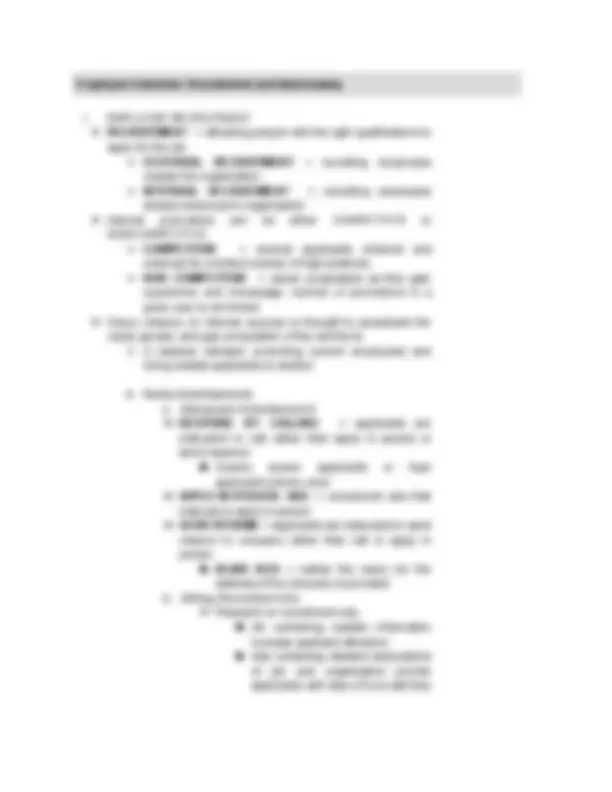
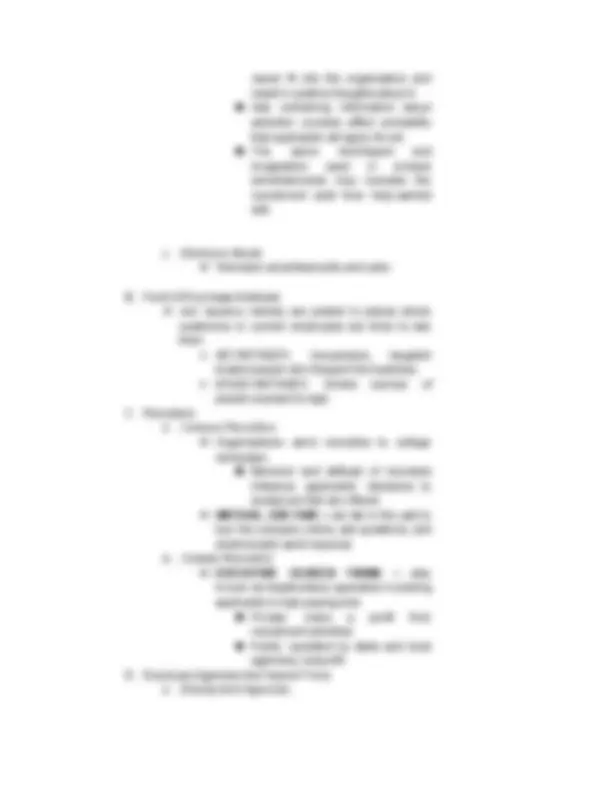
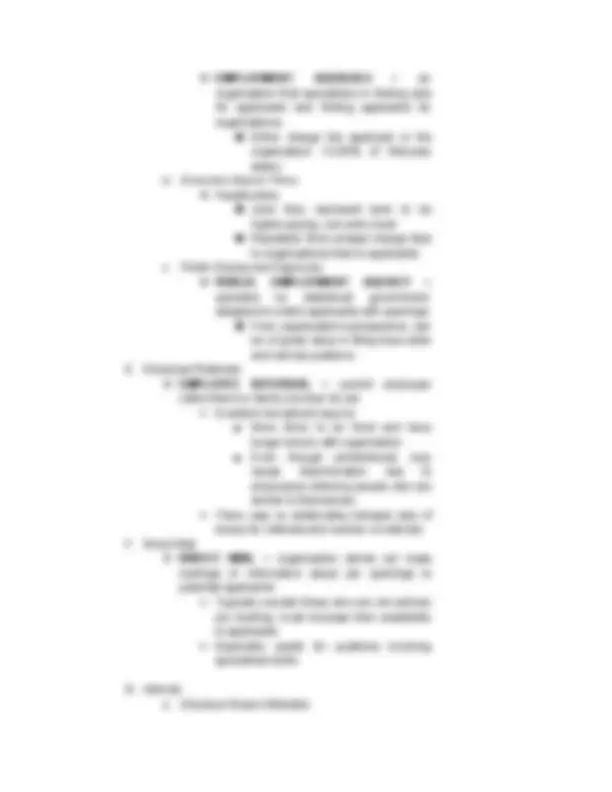
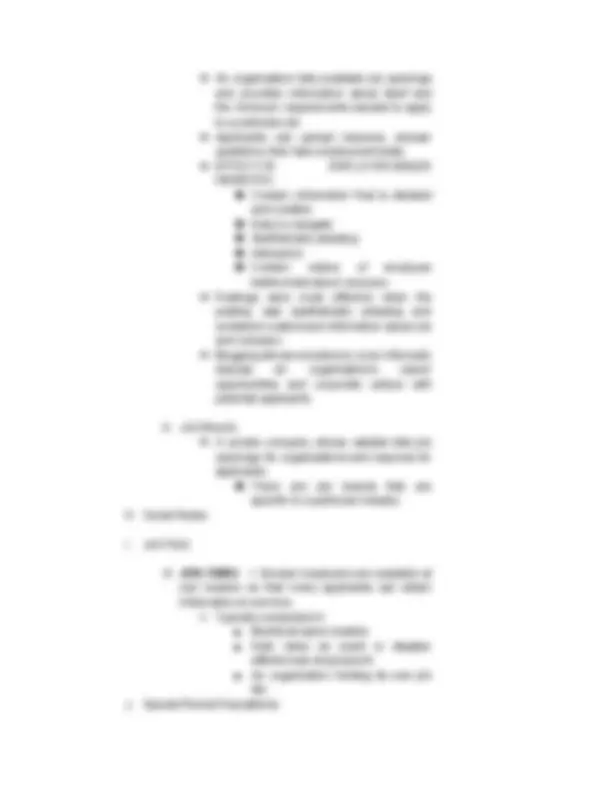
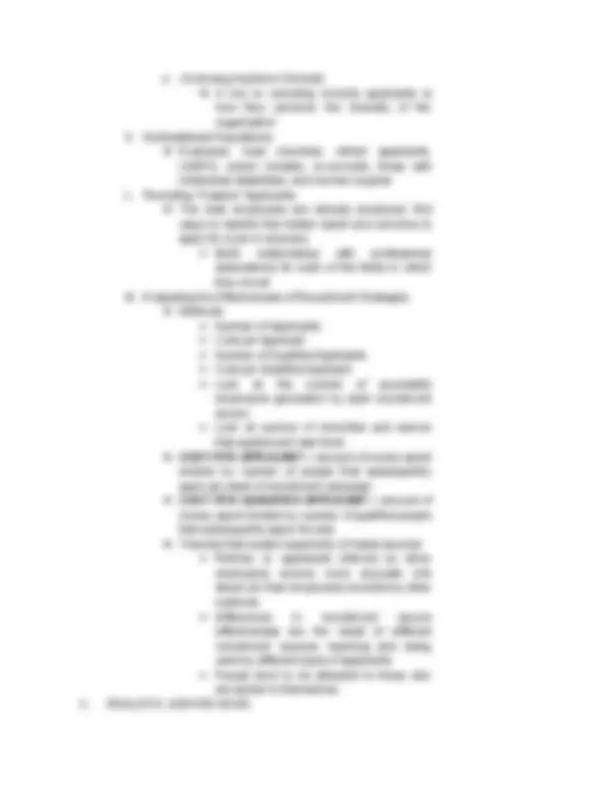
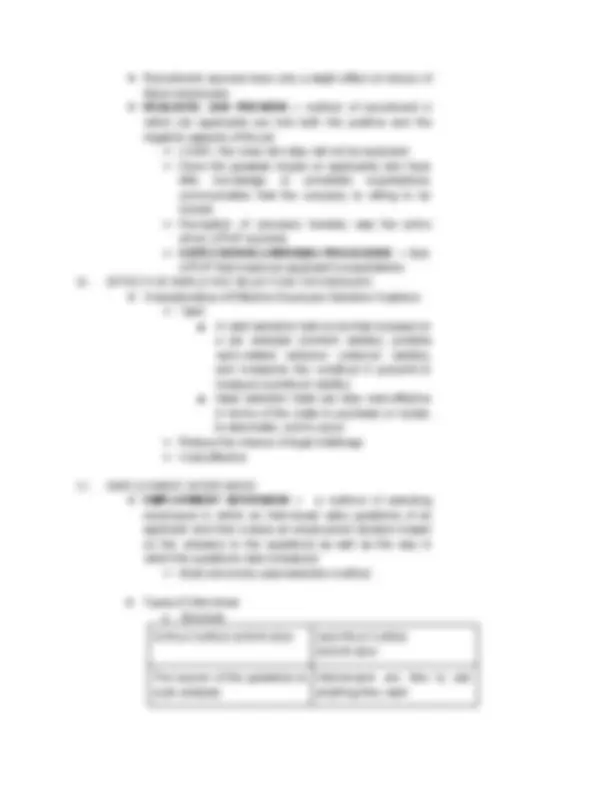
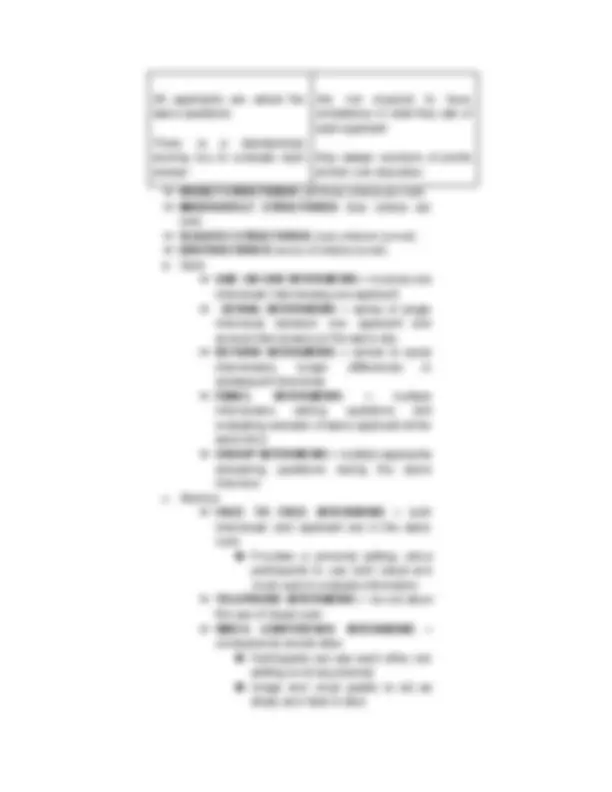
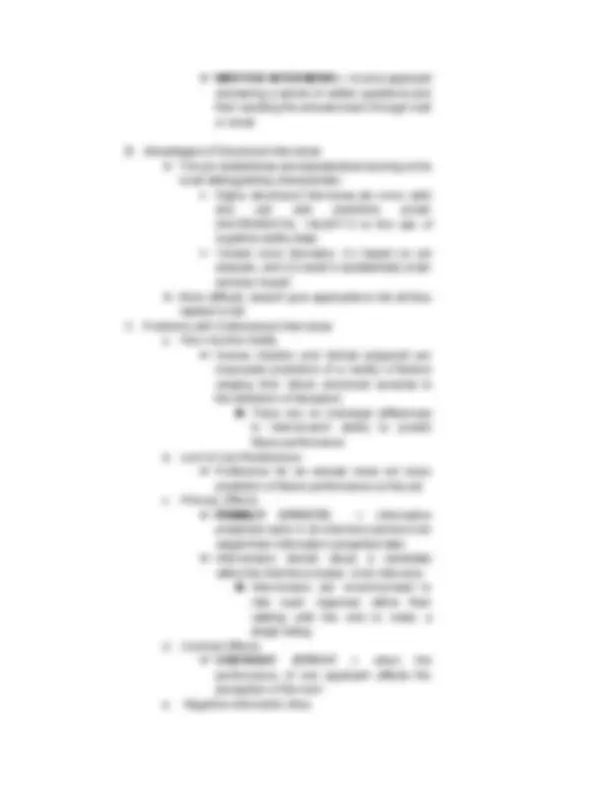
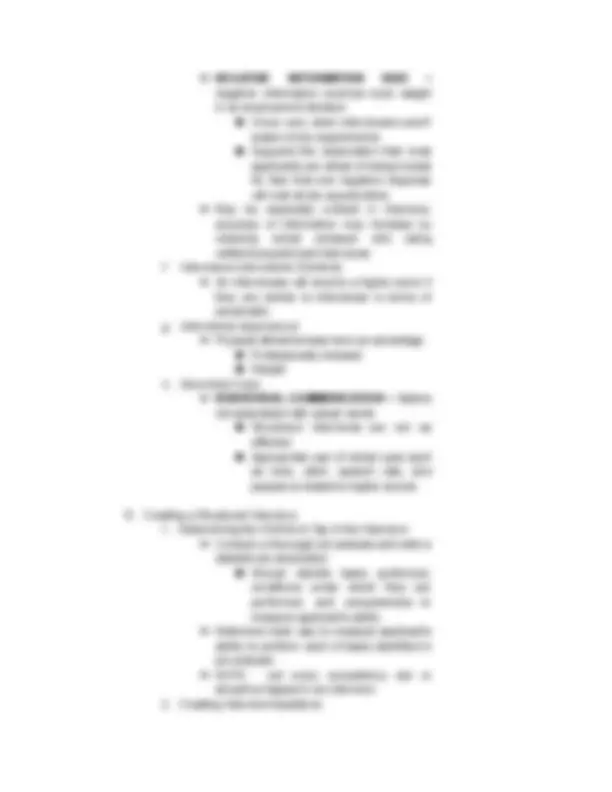
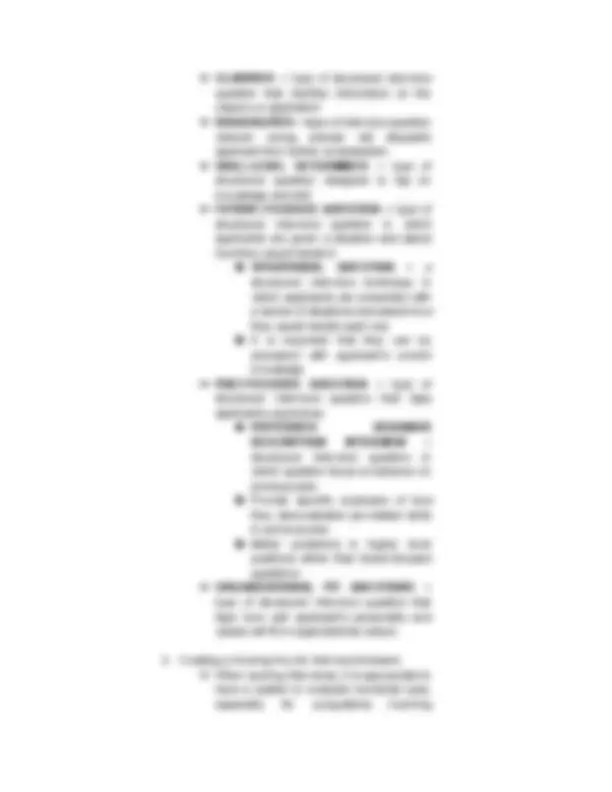
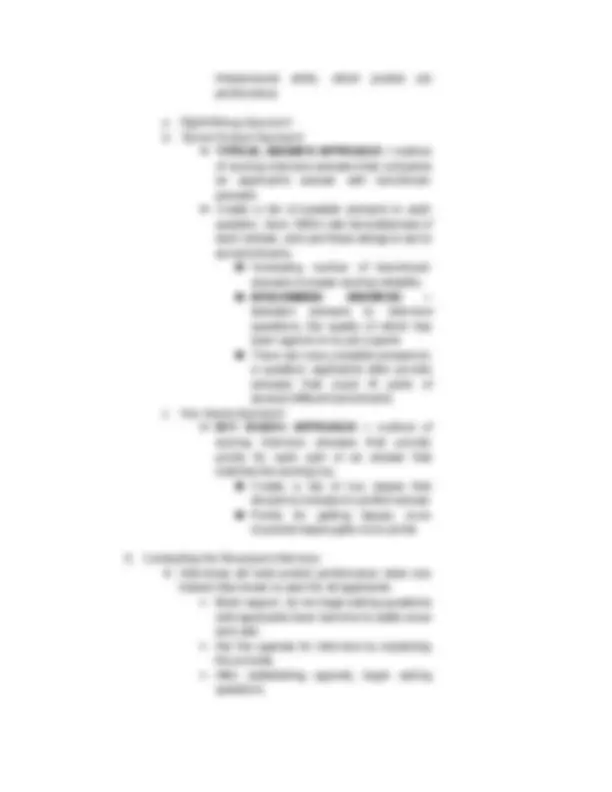
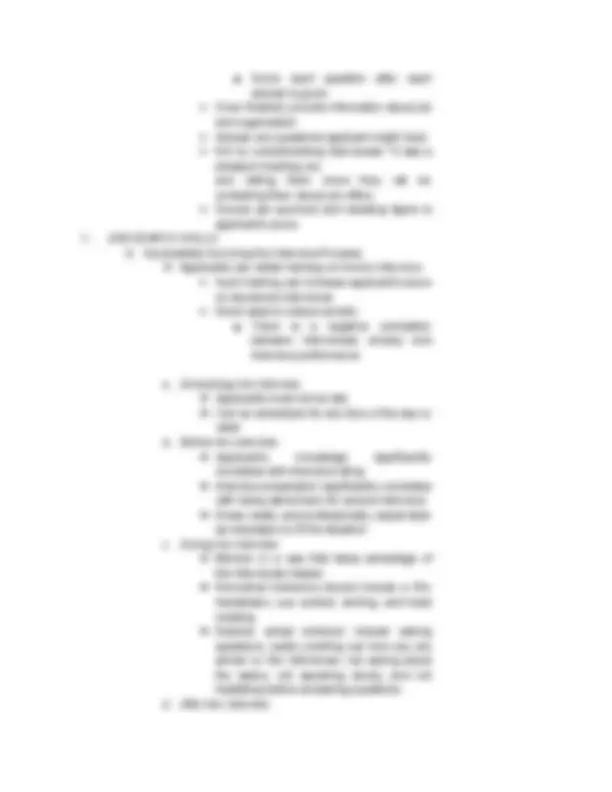
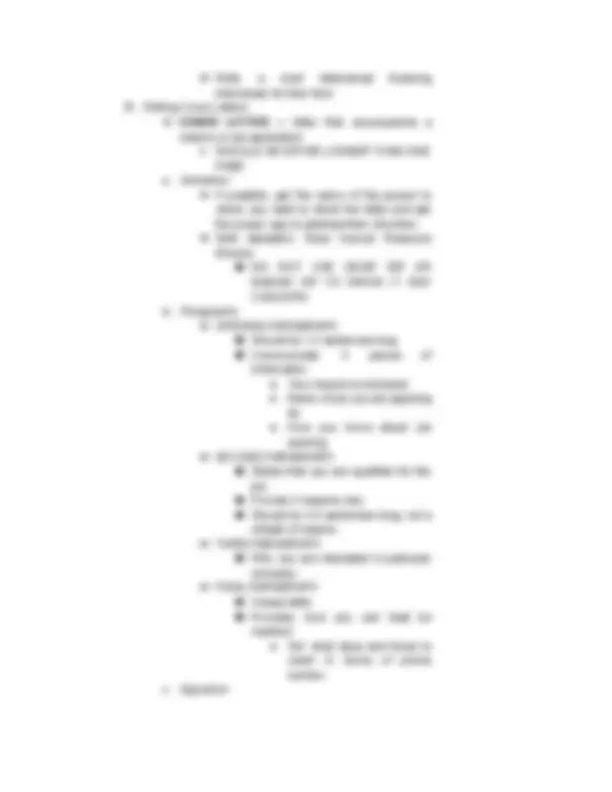
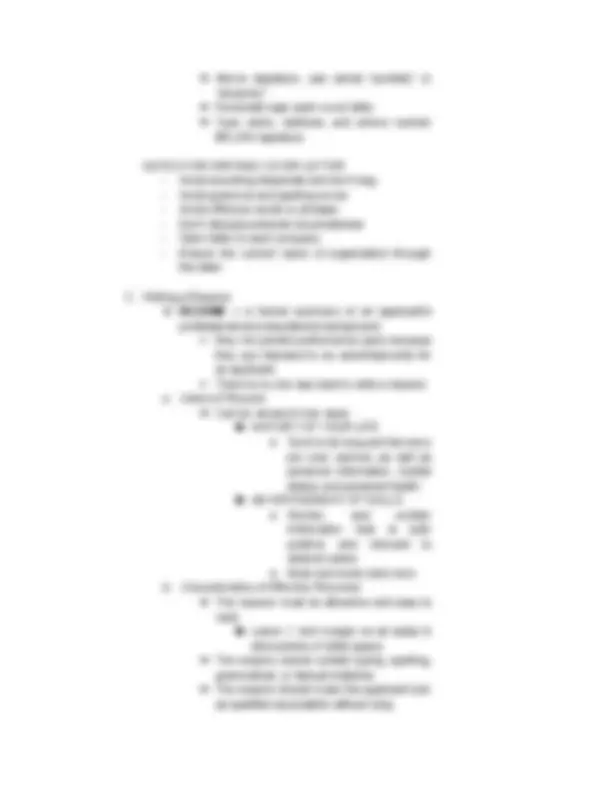
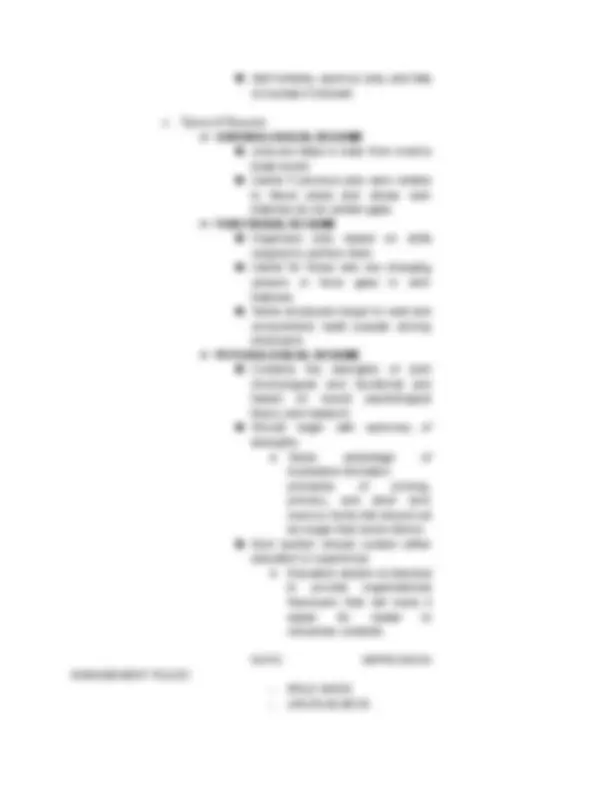
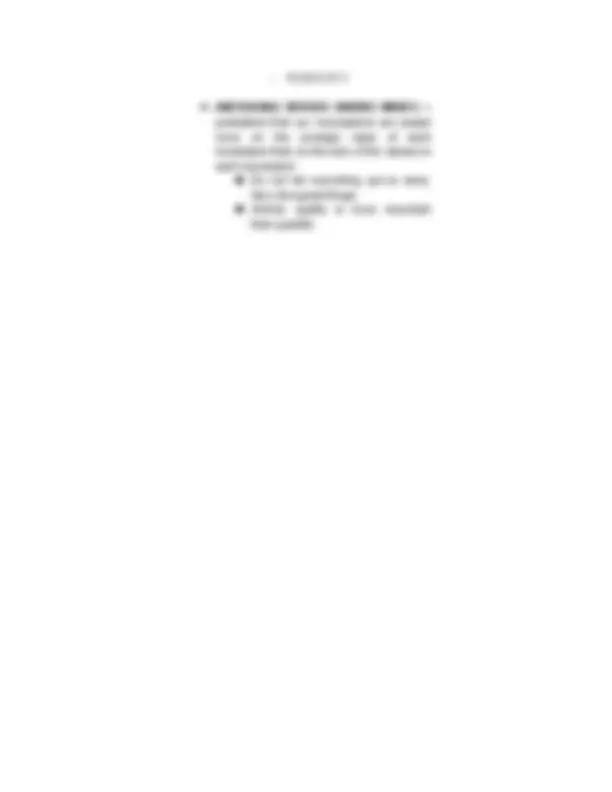
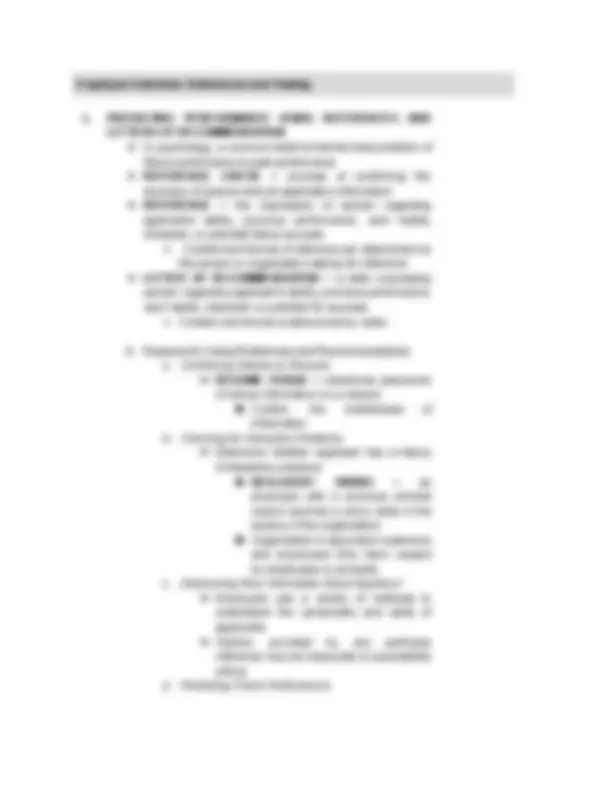
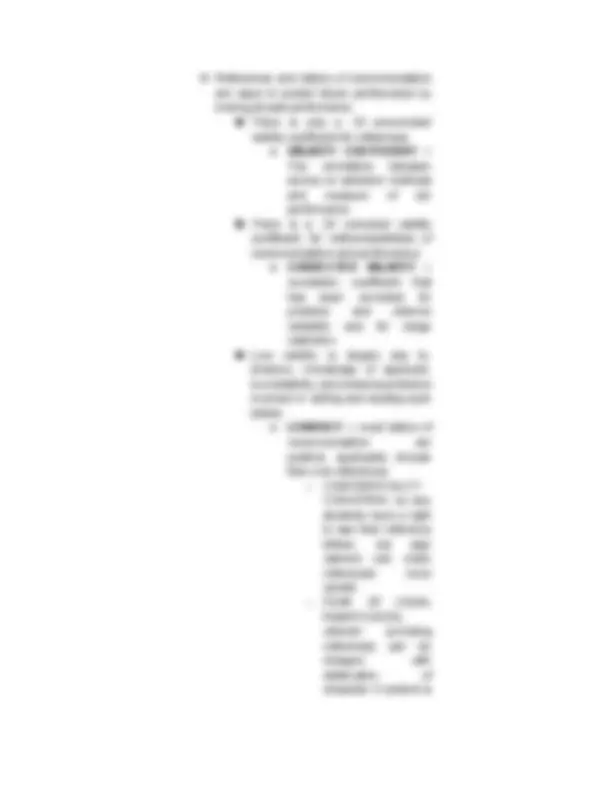
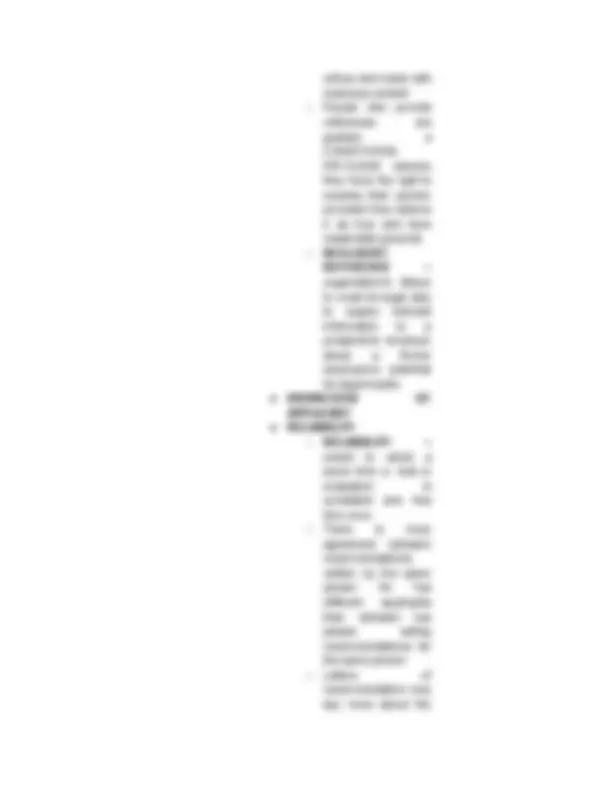
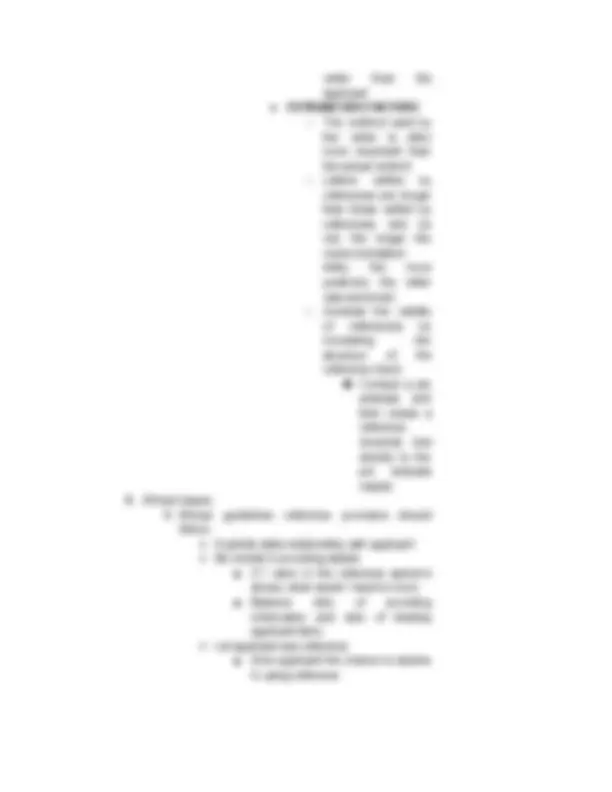
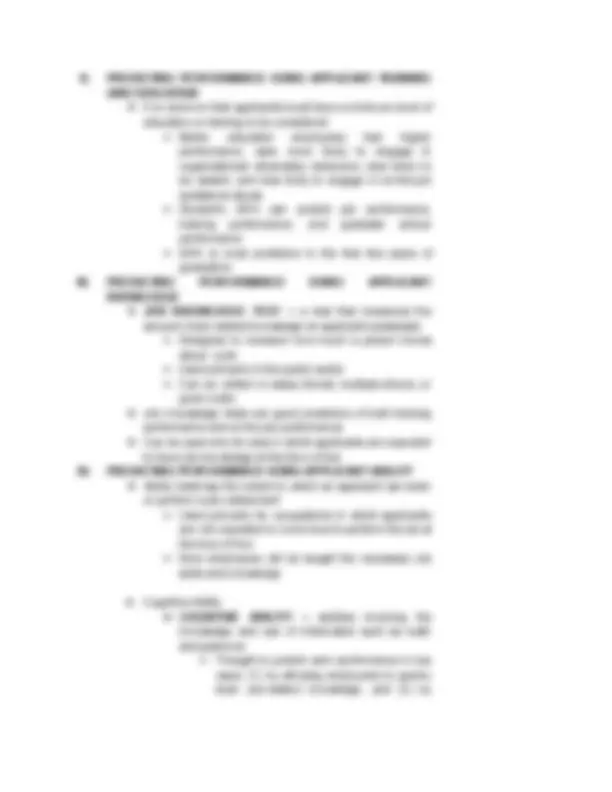
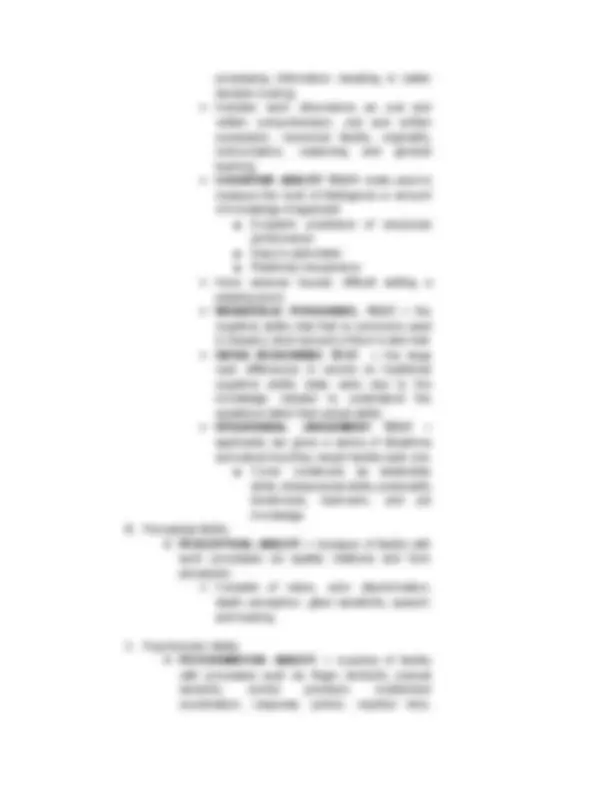
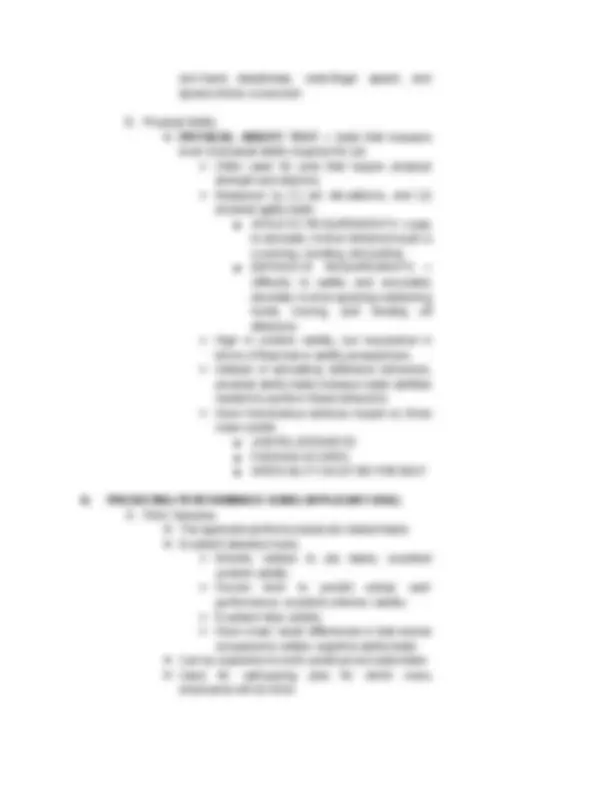
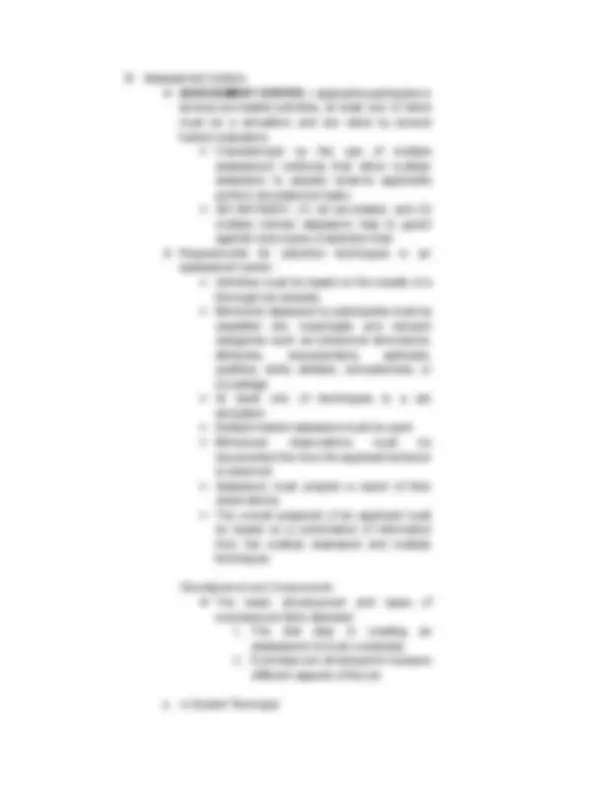
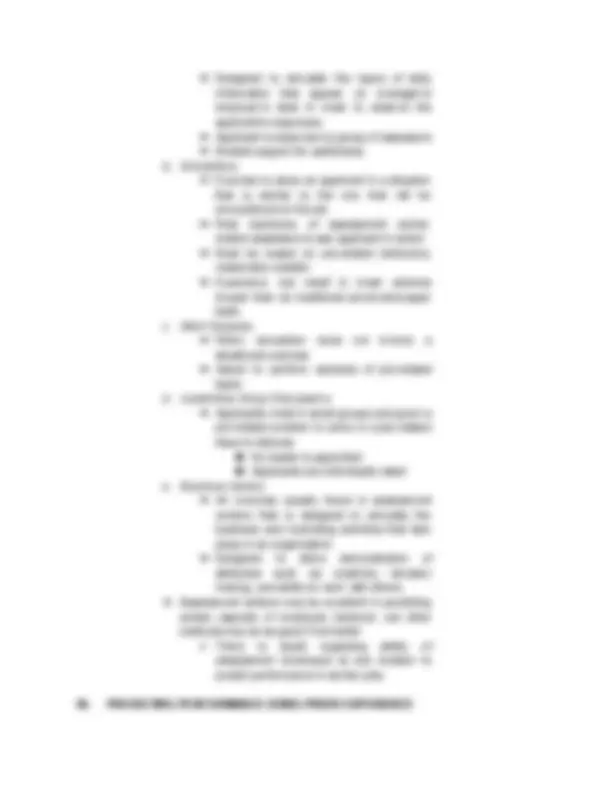
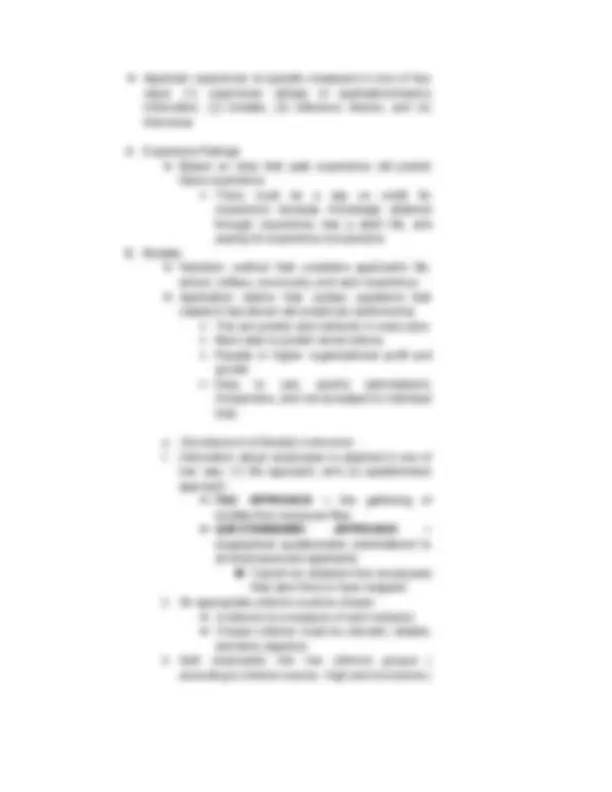
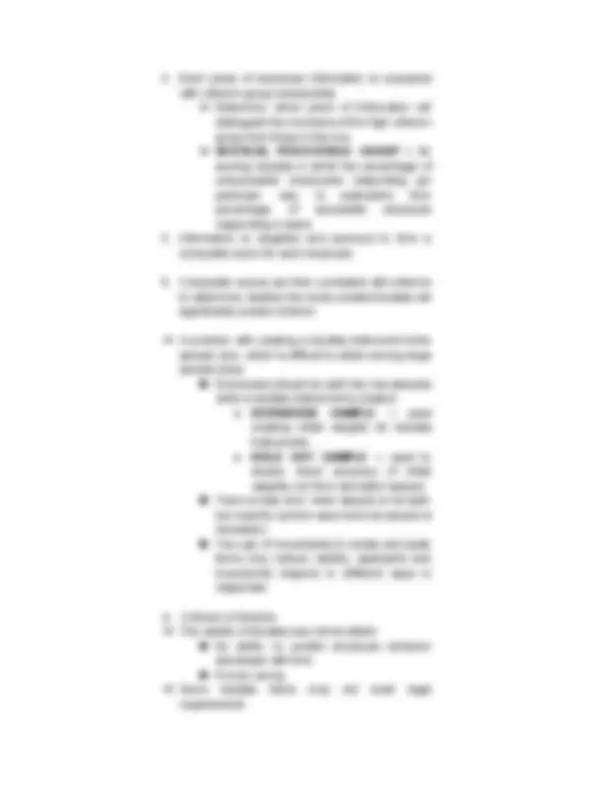
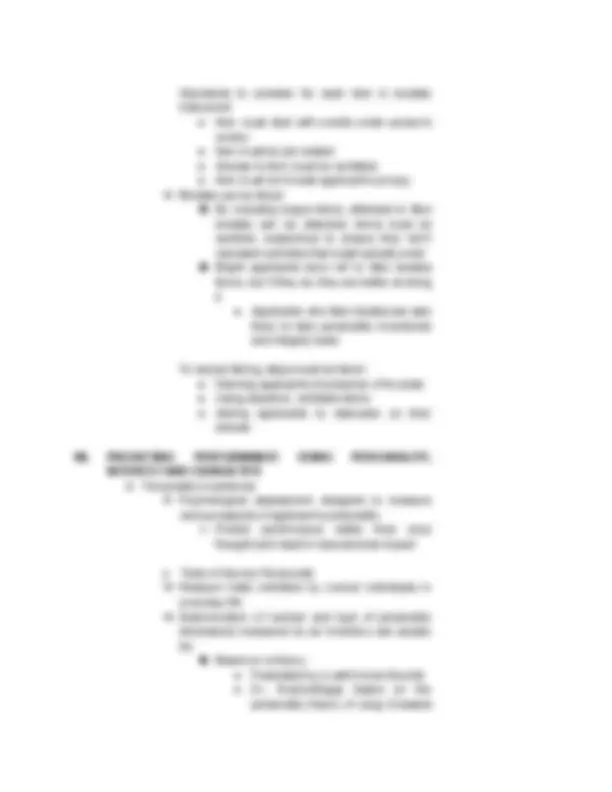
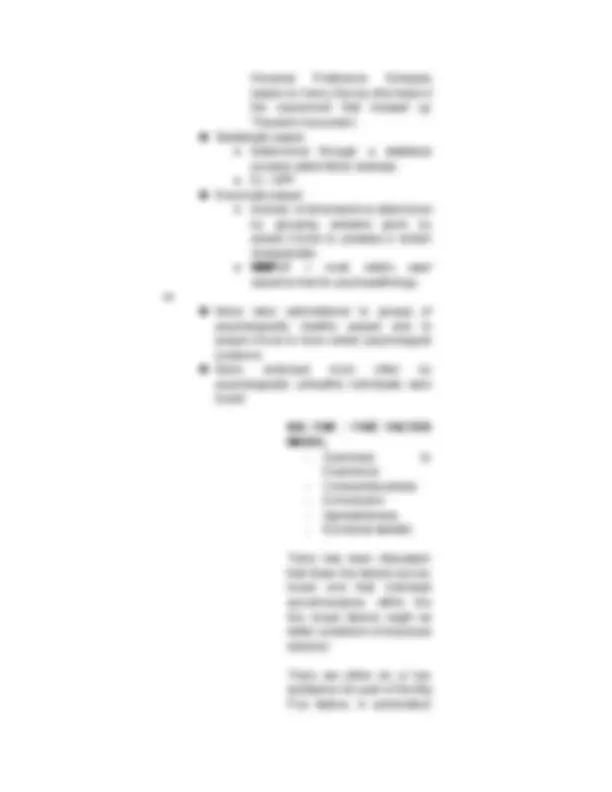
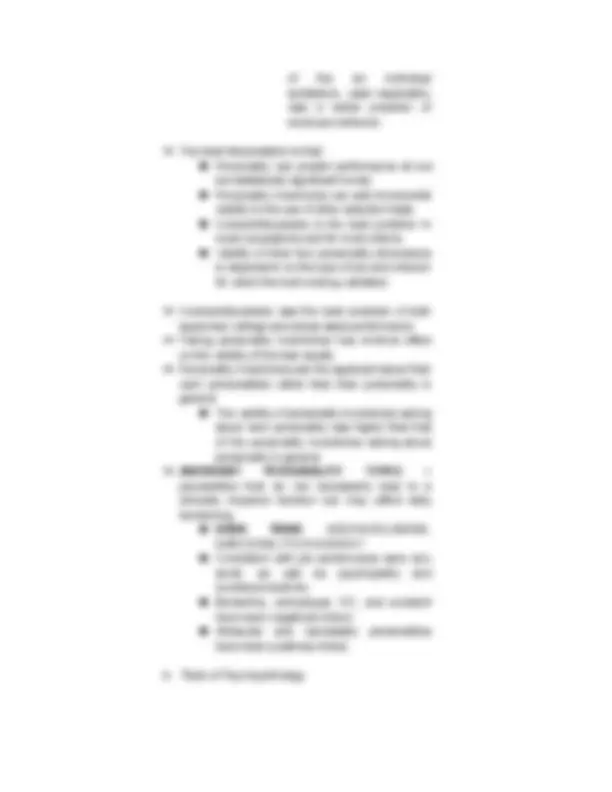
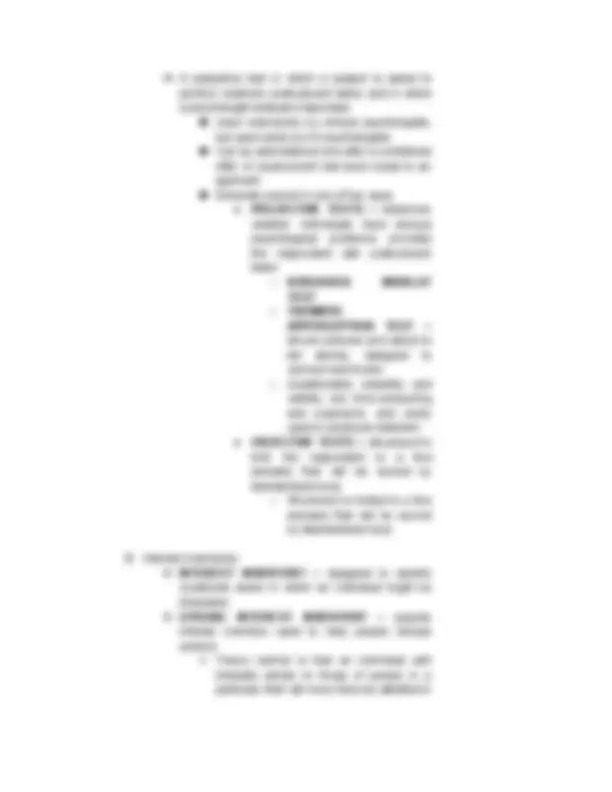
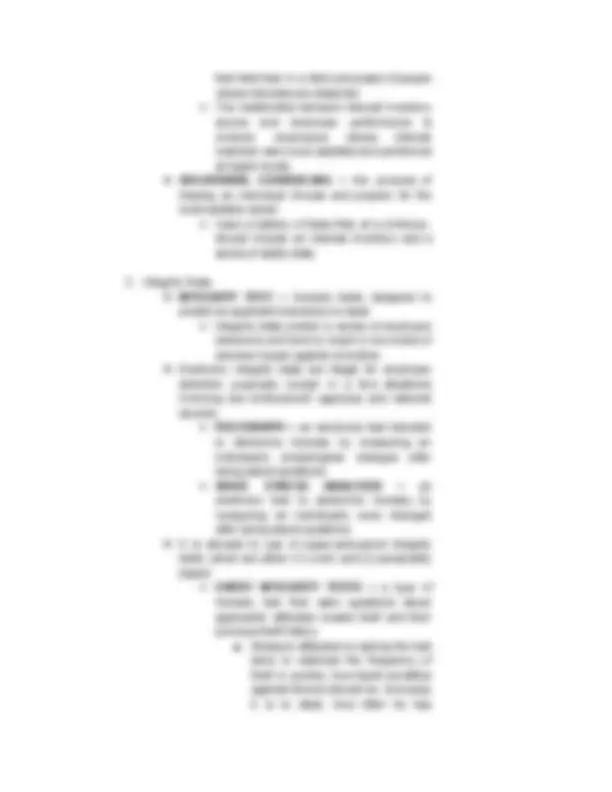
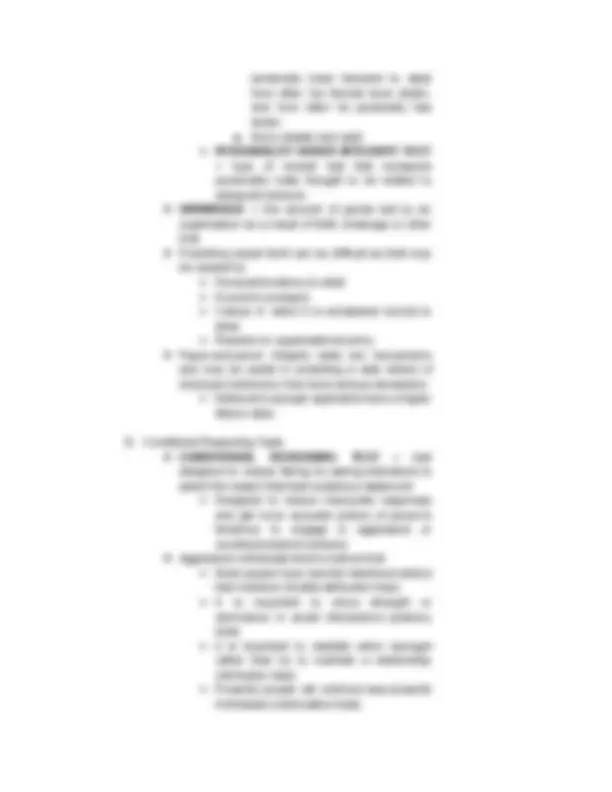
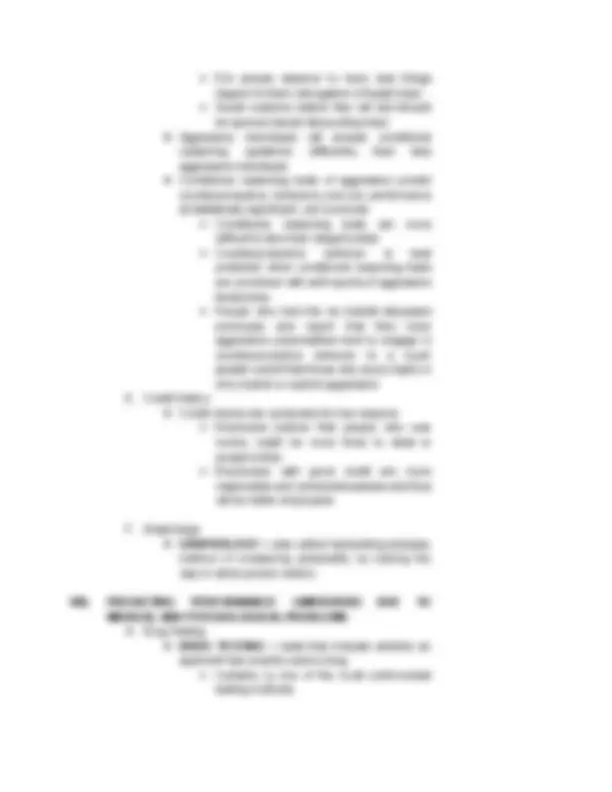
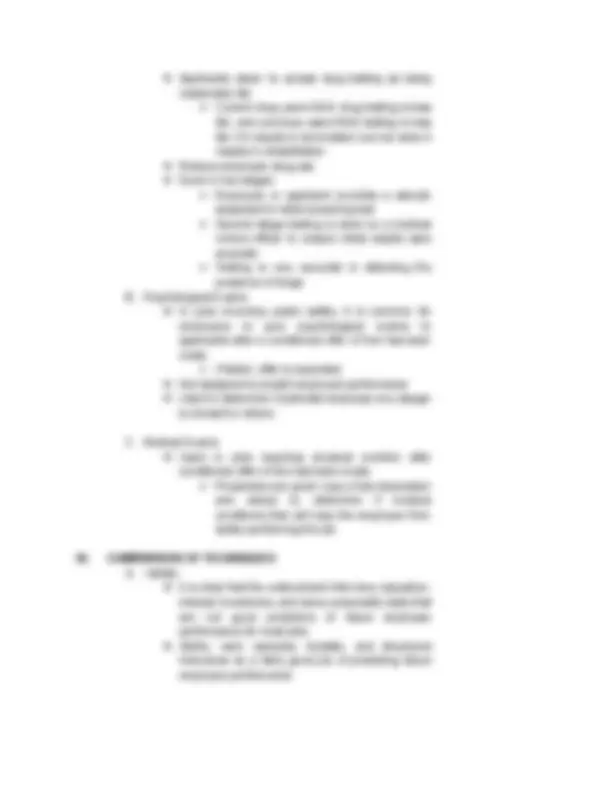
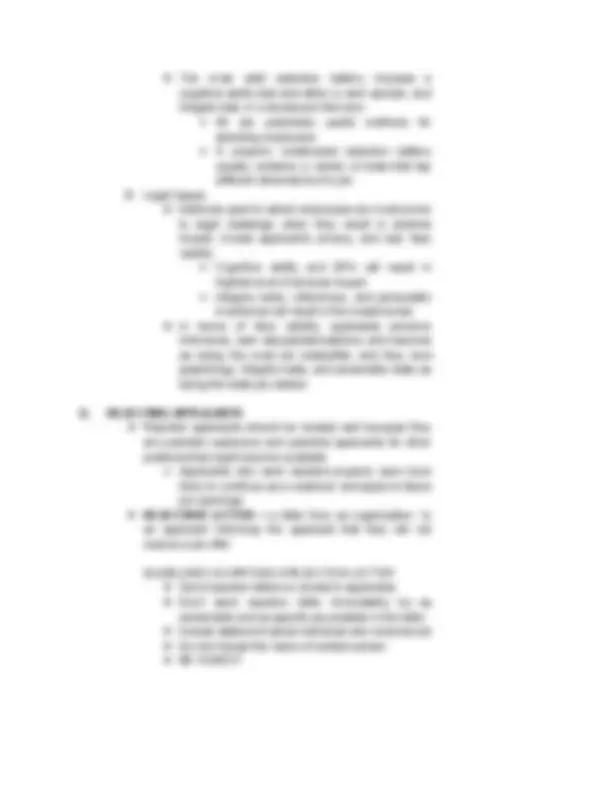
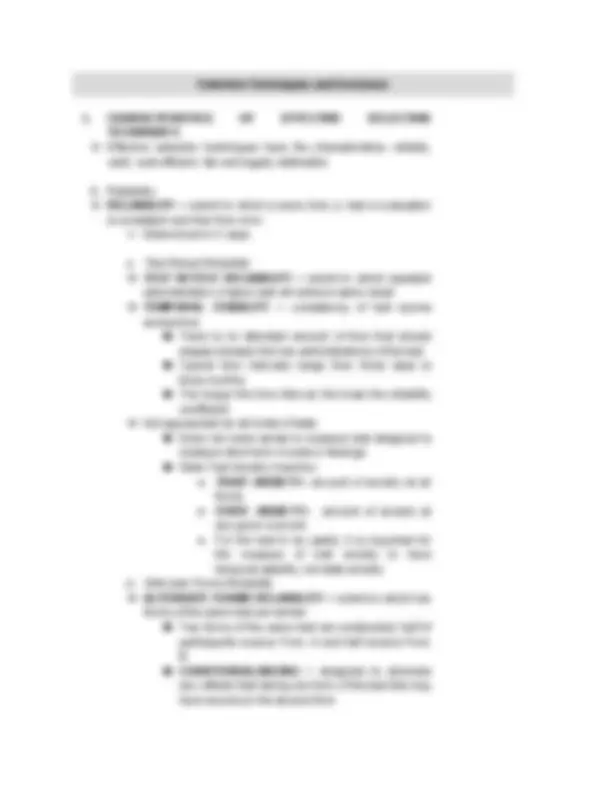
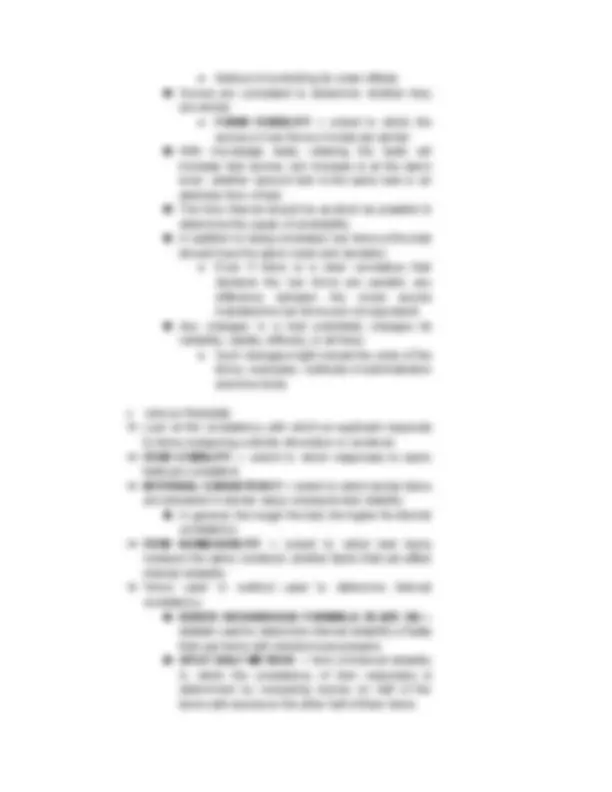
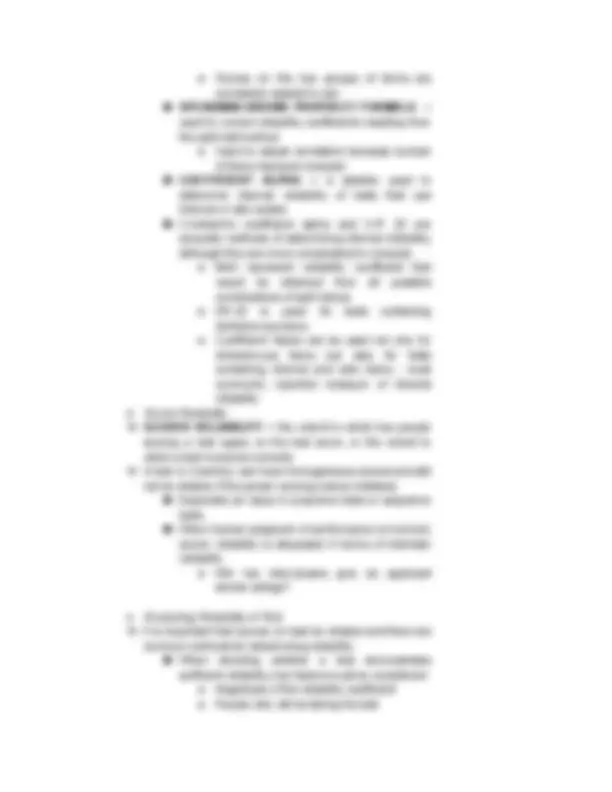
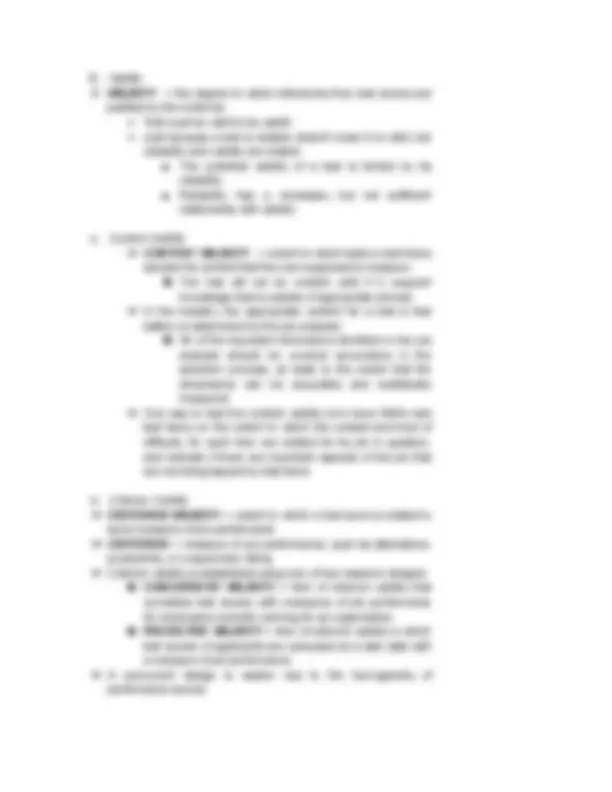
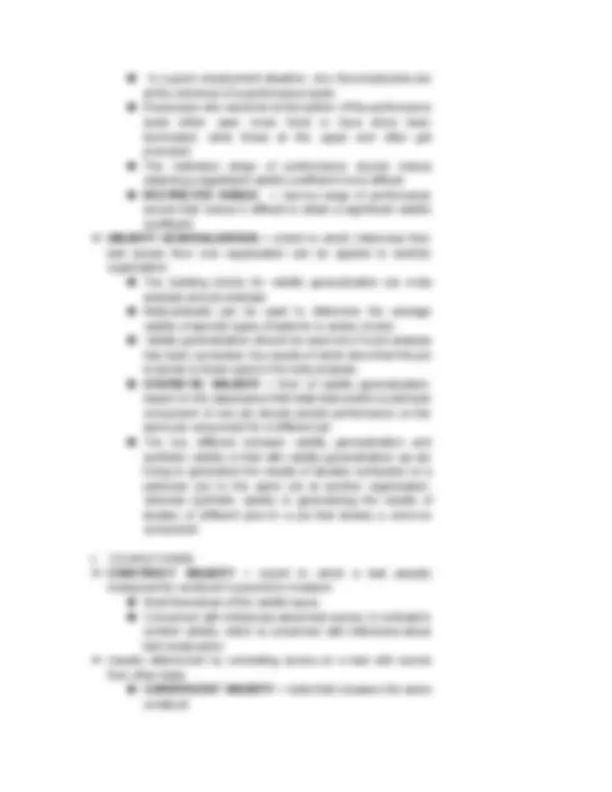
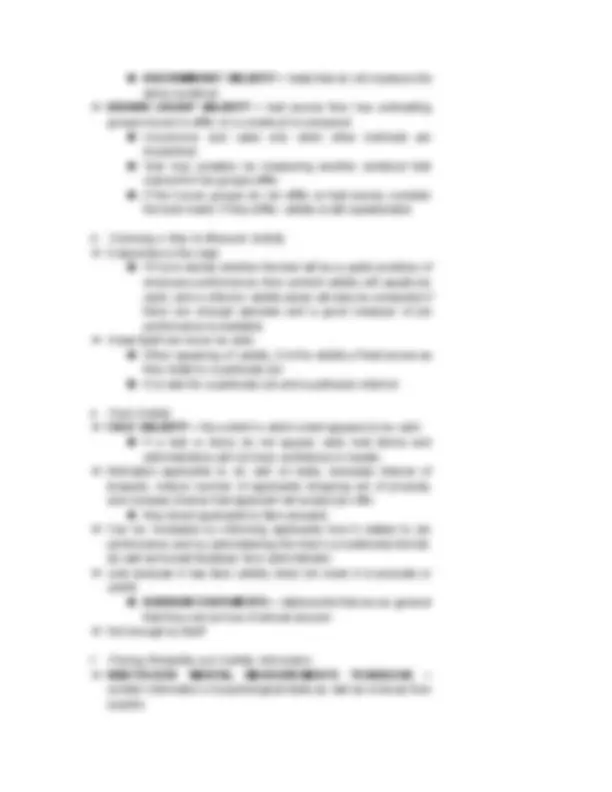
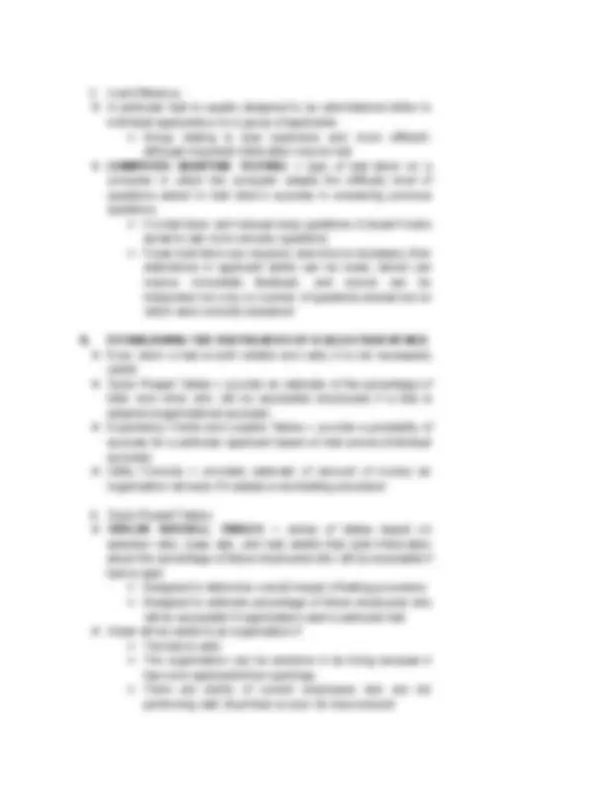
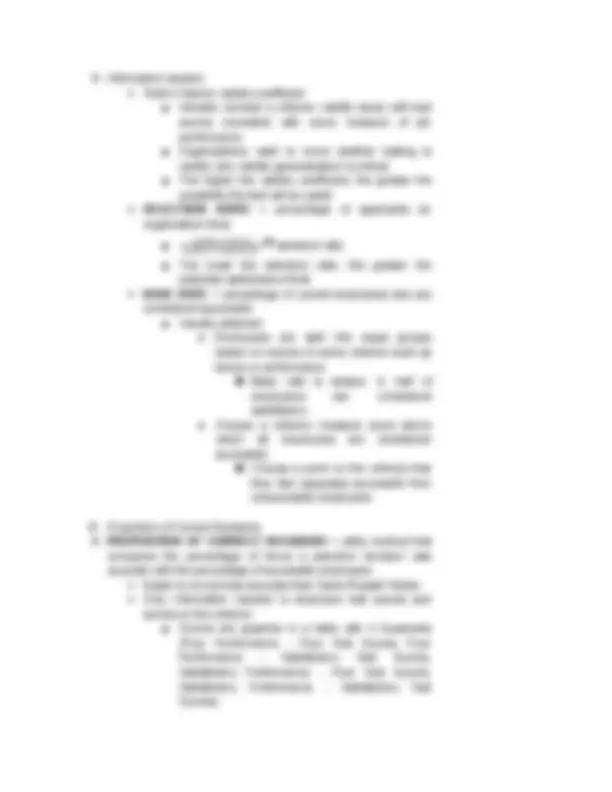
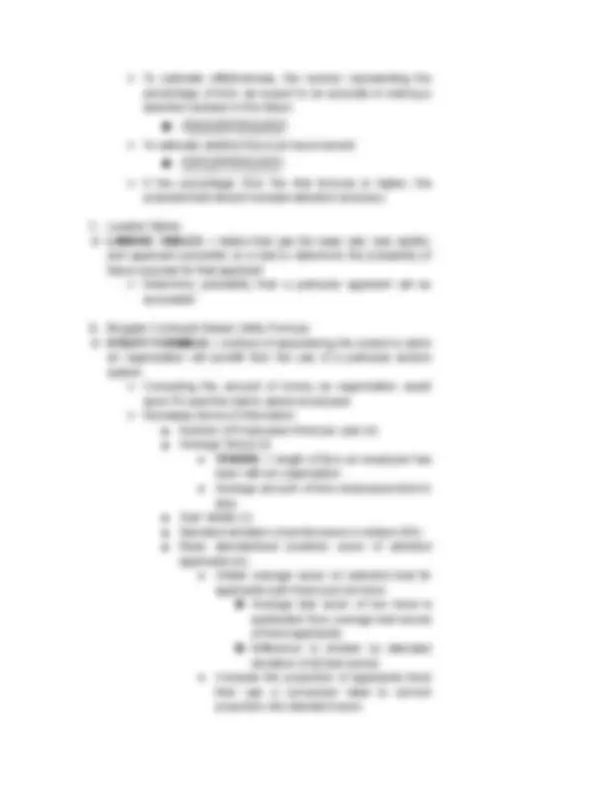
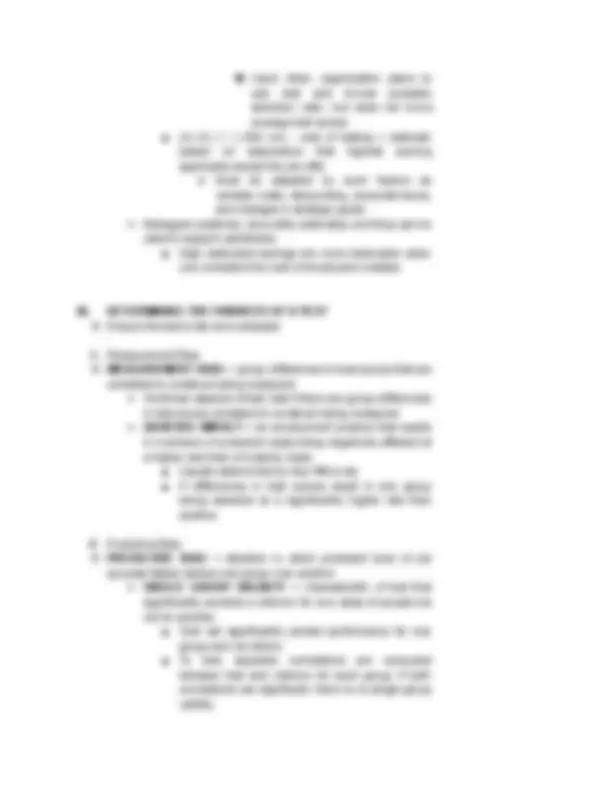
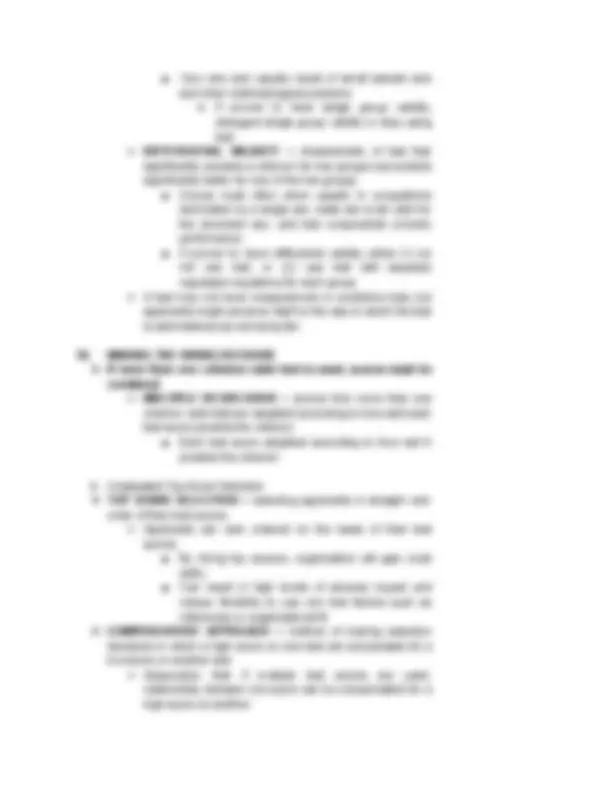
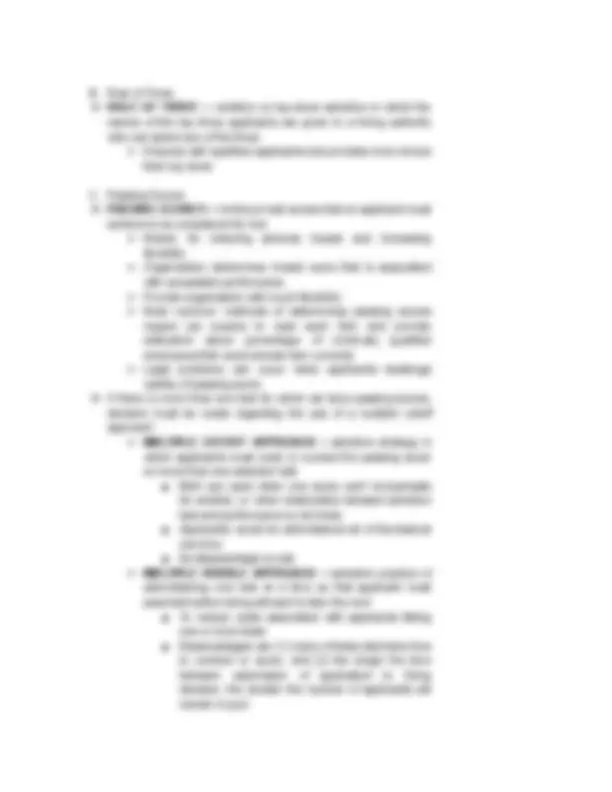
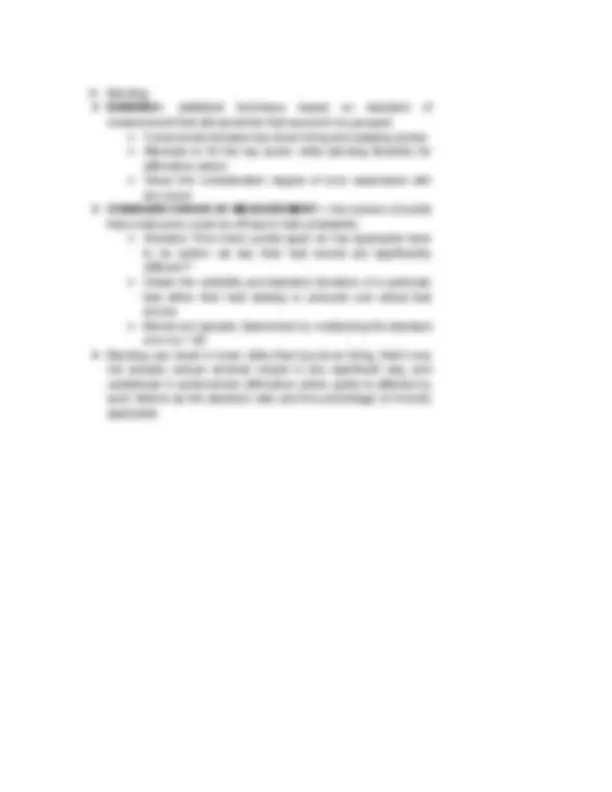
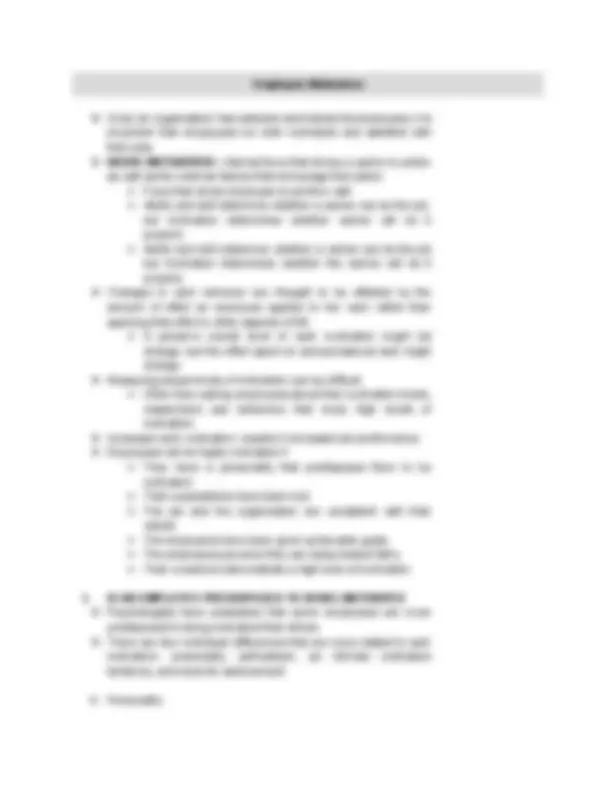
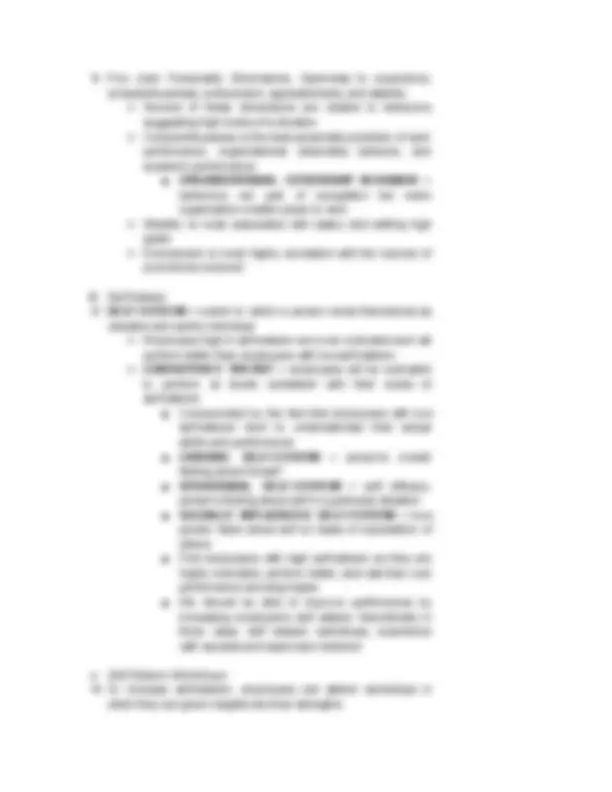
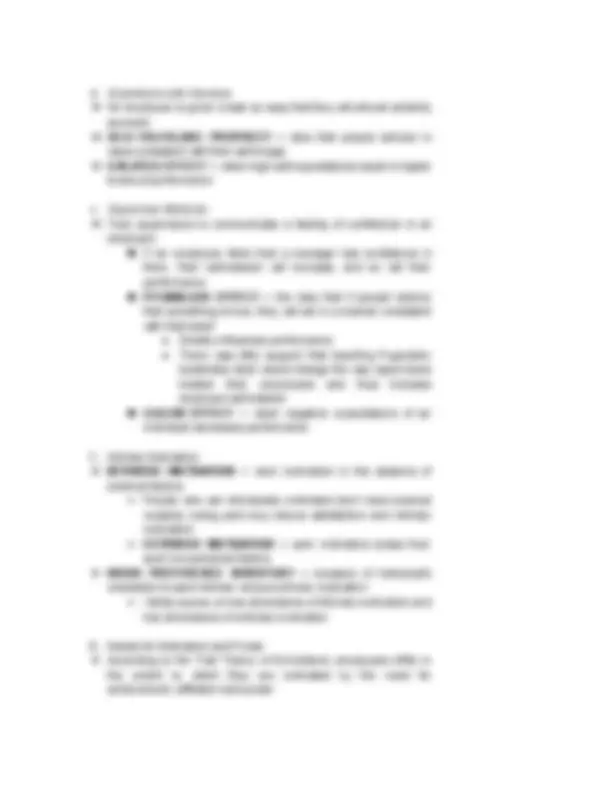
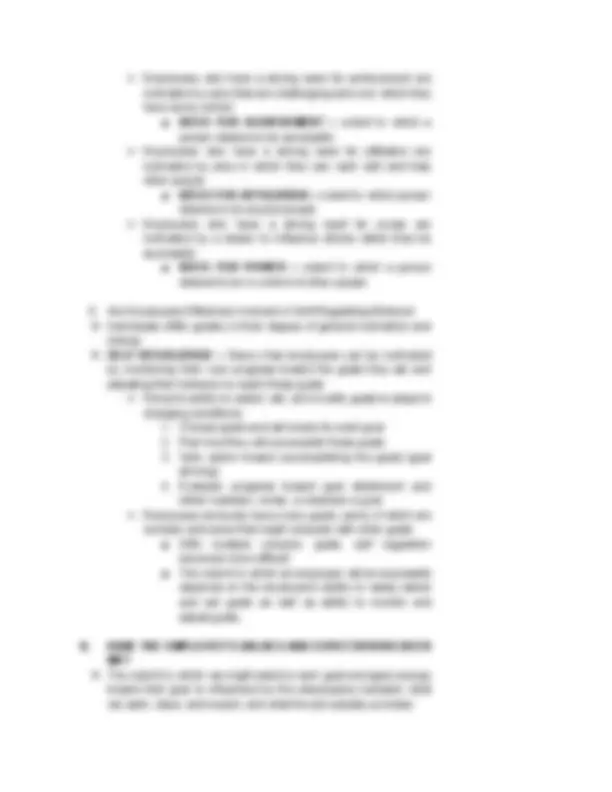
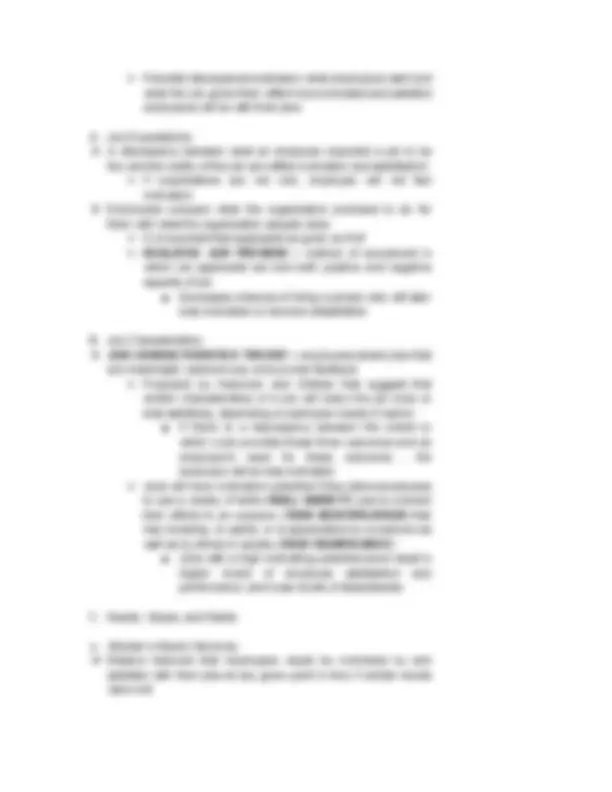
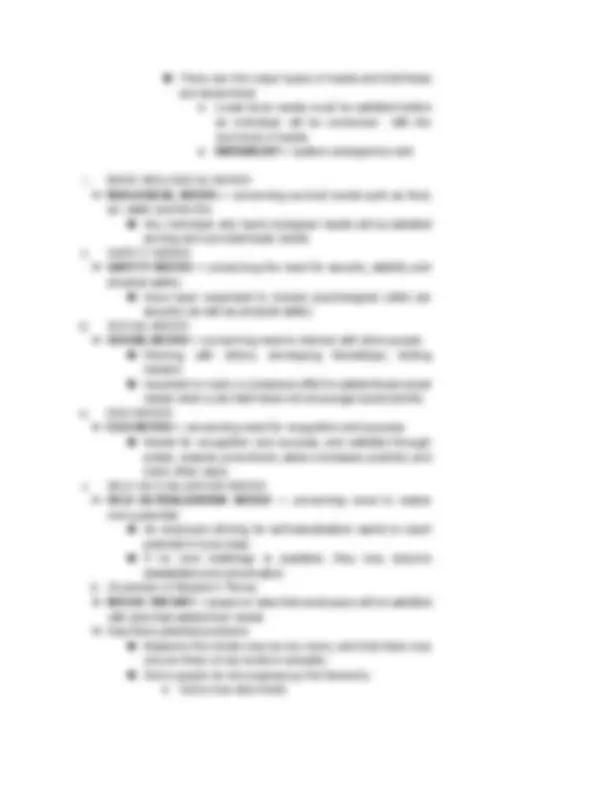
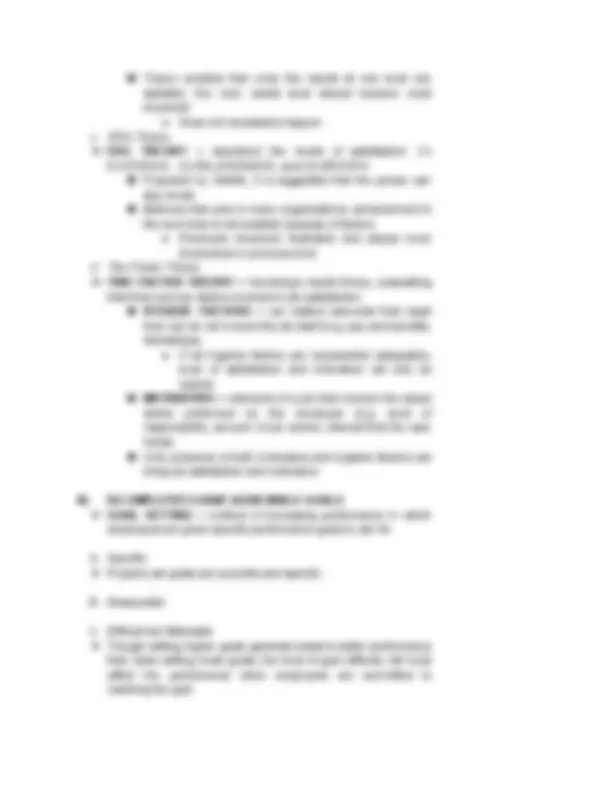
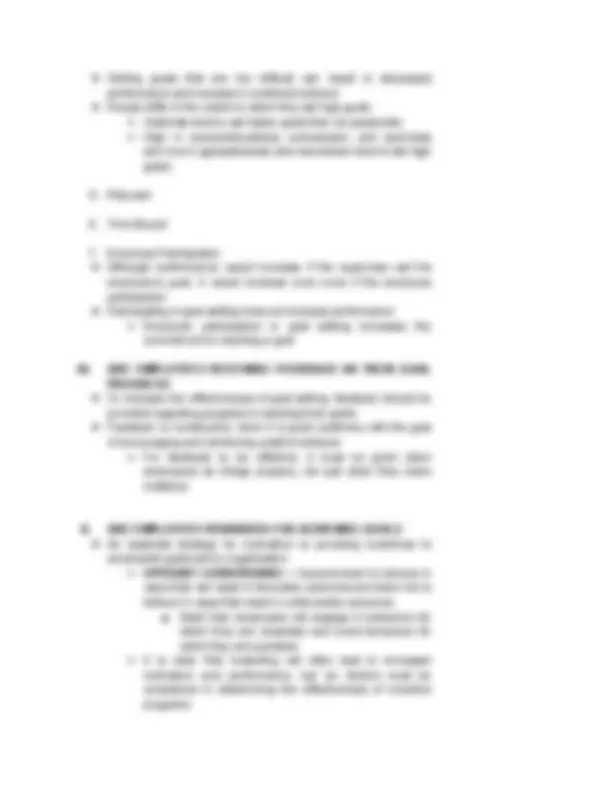
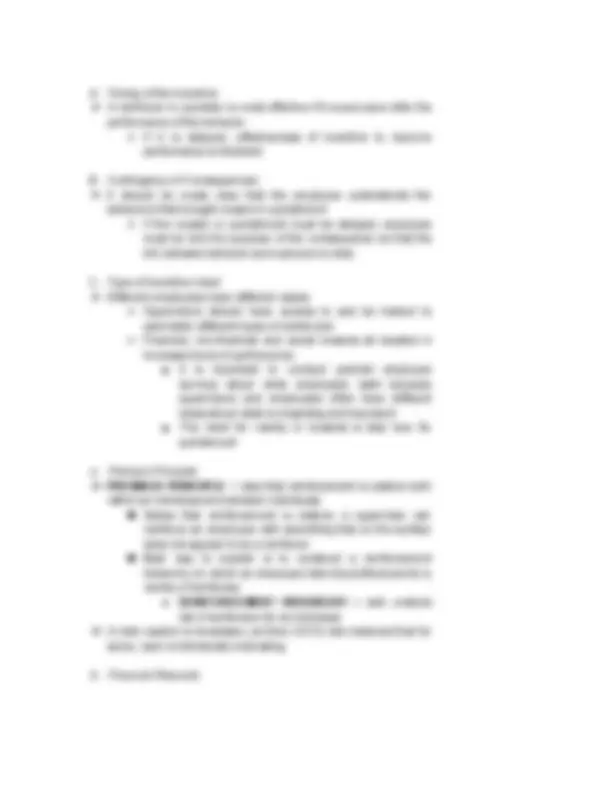
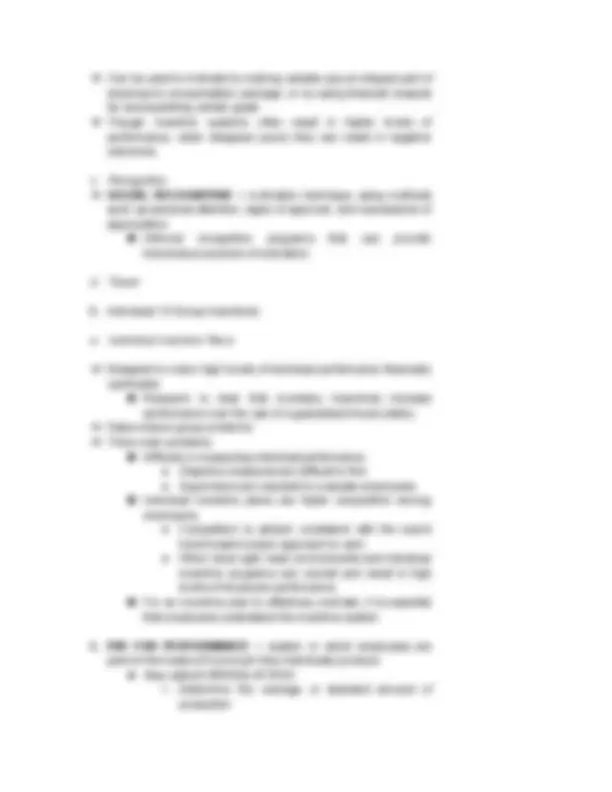
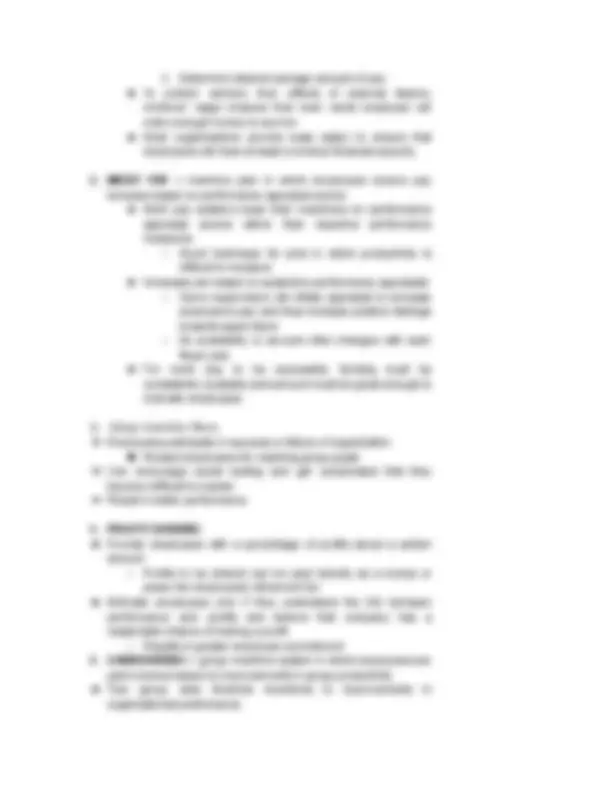

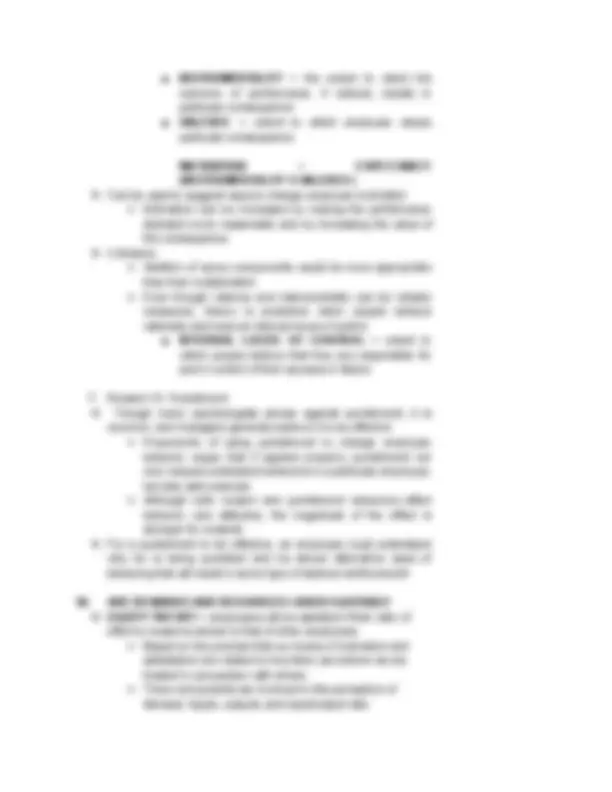
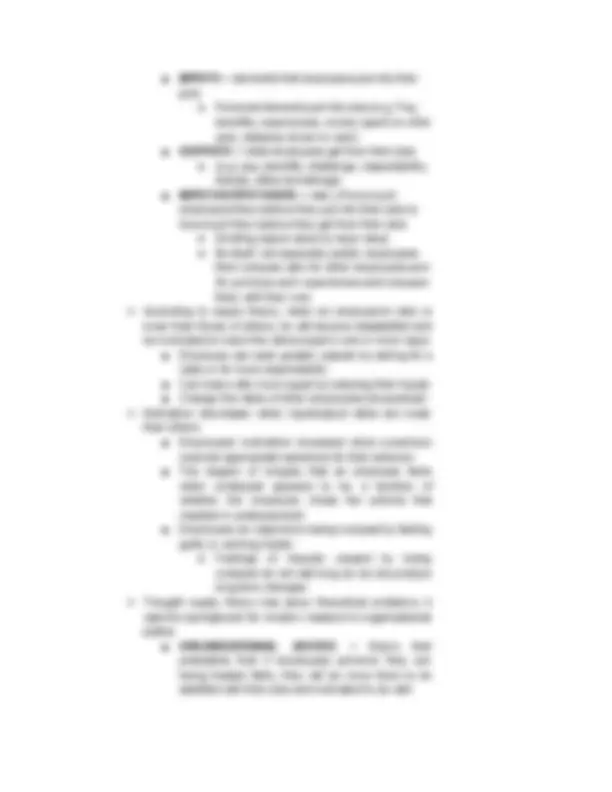
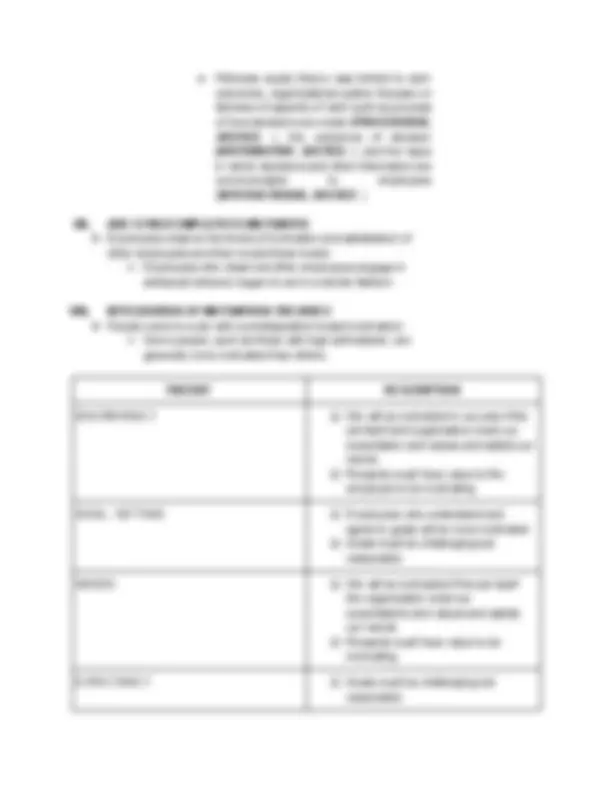
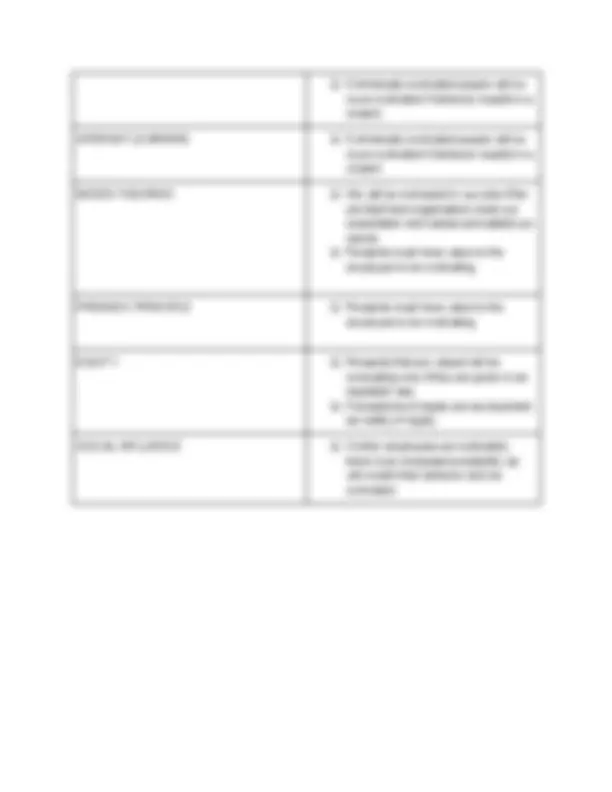


Study with the several resources on Docsity

Earn points by helping other students or get them with a premium plan


Prepare for your exams
Study with the several resources on Docsity

Earn points to download
Earn points by helping other students or get them with a premium plan
Community
Ask the community for help and clear up your study doubts
Discover the best universities in your country according to Docsity users
Free resources
Download our free guides on studying techniques, anxiety management strategies, and thesis advice from Docsity tutors
Intro to chapter 3 discussions
Typology: Lecture notes
1 / 90

This page cannot be seen from the preview
Don't miss anything!



















































































Introduction to Industrial / Organizational Psychology I. THE FIELD OF PSYCHOLOGY A. Differences Between I/O and Business Programs Industrial/Organizational Psychology is a branch of psychology that applies the principles of psychology to the workplace ❖ PURPOSE: to enhance the dignity and performance of human beings, and the organizations they work in, by advancing the science and knowledge of human behavior ❖ The application of psychological principles is what best distinguishes I/O from business programs ❖ It examines factors that affect the people in an organization as opposed to the broader aspects of running an organization ❖ I/O psychology programs focus almost exclusively on issues involving people in an organization ❖ It examines factors that affect people in an organization as opposed to the broader aspects of running an organization ❖ It relies heavily on research, quantitative methods, and testing techniques ➢ I/O psychologists are trained to use empirical data and statistics rather than intuition to make decisions ➢ They are not clinical psychologists, and they do not conduct therapy for workers (counselors conduct therapy) ➢ SCIENTIST-PRACTITIONER MODEL = I/O psychologists act as scientists when they conduct research and as practitioners when they work with actual organizations ■ They apply research findings so that the work they perform will be of high quality and enhance effectiveness ■ Professionals in the field can have a positive impact on the lives of other people by improving employee effectiveness B. Major Fields of Psychology ❖ The goal of I/O is to increase the productivity and well being of employees.
I/O psychology was born in the early 1900s. Prior to WW1, it was known as economic psychology, business psychology and employment psychology.
for the behavior may not be known. At still other times, we have questions but can’t predict what the answer will be
2. Literature Reviews The next step is to search the literature for similar research. If the question of interest has been researched several times before, it would not be necessary to conduct another study. The research can provide some good ideas on how to conduct your study. JOURNALS = written by researchers directly reporting results of study; best source of unbiased and accurate information about topic BRIDGE PUBLICATIONS = designed to bridge the gap between academia and the applied world - Usually written by professors about a topic of interest to practitioners - Not as formal or statistically complex as journals TRADE MAGAZINES = contain articles usually written by professional writers who have developed expertise in a given field - Main audience is practitioners in the field - Present the research in an easy to understand format - Do not cover all the research on the topic; can be somewhat biased MAGAZINES = designed to entertain as well as inform - Good sources of ideas; bad sources to use to support scientific hypothesis - Written by professional writers who do not have training in the topic and have little expertise in what they are writing about A problem with relying on secondary sources is that one cannot be sure if the information accurately reflects the information in the primary source. 3. Location of Study LABORATORY RESEARCH
extent to which research results can be expected to hold true outside specific setting in which they were obtained FIELD RESEARCH
- FIELD RESEARCH = research conducted in a natural setting as opposed to laboratory - Loses control of extraneous variables Psychologists require that subjects participate in studies of their own free will, but can be waived only when: (1) research involves minimal risk to participants, (2) waiver will not adversely affect rights of participants, and (3) research could not be carried out without the waiver. Informed consent can be waived only if the importance of the study outweighs the negative consequences. - INFORMED CONSENT = process by which subjects give permission to be included in study Researchers must ensure confidentiality. 4. Research Method to be Used EXPERIMENTS
The method of selecting the sample is certainly dependent on the nature of the organization. However, there must be a balance between practicality and experimental rigor during the experiment. RANDOM SAMPLE = sample in which every member of the relevant population has equal chance of being chosen to participate It is important to keep in mind that studies using students as subjects may not generalize to the real world Obtaining random samples is very difficult, so many studies use a convenience sample and then randomly assign subjects to the various experimental conditions. CONVENIENCE SAMPLE = a nonrandom research sample used because it is easily available RANDOM ASSIGNMENT = the random, unbiased assignment of subjects in a research sample to the various experimental and control conditions
6. Running the Study To ensure that data are collected in an unbiased fashion, it is important that all instructions to the subjects be stated in a standardized fashion and at a level that is understandable Once the subject is finished with participation, she should be debriefed or told the purpose of the experiment and be given a chance to ask questions. that DEBRIEFED = informing the subject in an experiment about the purpose of the study in which they were a participant and providing any other relevant information 7. Statistical Analysis Results are statistically analyzed, which helps determine how valid the results are and not simply results of chance. Significant levels indicate only the level of confidence we can place on a result being the product of chance. To determine the
Job Analysis and Evaluation I. JOB ANALYSIS A. Importance of Job Analysis ❖ A thorough job analysis; AKA WORK ANALYSIS ❖ Foundation for almost all human resources activities a. Writing Job Descriptions JOB DESCRIPTION JOB ANALYSIS Brief 2-5 page summary of tasks and job requirements found in the job analysis Written result of job analysis Process of determining the work activities and requirements b. Employee Selection c. Training ➔ Job analyses yield lists of job activities that can be systematically used to create training programs d. Personpower Planning ➔ WORKER MOBILITY = if individuals are hired for a particular job, to what other jobs can they expect to eventually be promoted and become successful? ➔ PETER PRINCIPLE = promote good employees until they reach their highest level of incompetence e. Performance Appraisal ➔ The evaluation of employee performance must be job related ➔ The use of specific, job-related categories leads to more accurate performance appraisals that are better accepted not only by employees but also by the courts ➔ Can serve as excellent source of employee training and counseling
f. Job Classification ➔ Classify jobs into groups based on similarities in requirements and duties ➔ Useful for determining pay levels, transfers, and promotions g. Job Evaluation ➔ Determine the worth of a job h. Job Design ➔ Can be used to determine the optimal way in which a job should be performed i. Compliance with Legal Guidelines ➔ Any employment decision must be based on job-related information ➔ One legally acceptable way to directly determine job relatedness is by job analysis j. Organizational Analysis ➔ Job analysts often become aware of certain problems within an organization ➔ JOB ANALYSIS INTERVIEW = obtaining information about a job by talking to a person performing it ➔ Can then be used to correct problems and help function better B. Writing a Good Job Description ❖ A job description is a relatively short summary of a job and should be about 2-5 pages in length ➢ Must describe job in enough detail that decisions about activities can be made ❖ Professionals in organizations worry that listing each activity will limit their ability to direct employees to perform tasks not listed on job description ➢ Duties can always be added, which should be updated on a regular basis ➢ “And performs other job-related duties as assigned” should be included in the job descriptions a. Job Title ➔ Accurate title described the nature of the job, its power and status level, and the competencies needed to perform the job ➔ Aids in employee selection and recruitment
◆ Can be determined through a combination of logic, research, and use of specific job analysis techniques ◆ Competencies should be subdivided into two subsections ● KSAOs that an employee must have at the time of hiring ● KSAOs that can be obtained after being hired C. Preparing for a Job Analysis a. Who will Conduct the Analysis? ➔ Trained individual in the Human Resources ◆ Consultants are a good choice for conducting a job analysis because they are well trained and have extensive experience ◆ An interesting alternative to consultants is the use of college interns ➔ If job incumbents or supervisors are used, it is essential that they be trained in job analysis procedures b. How Often Should a Job Description be Updated? ➔ A job description should be updated if a job changes significantly ➔ JOB CRAFTING = informal changes that employees make in their jobs c. Which Employees Should Participate? ➔ COMMITTEE BASED JOB ANALYSIS = a group of subject matter experts meet to generate the tasks performed, the conditions under which they are performed, and the KSAOs needed to perform them ➔ FIELD-BASED JOB ANALYSIS = the job analyst individually interviews/observes a number of incumbents out in the field ➔ Participants should be selected randomly to be practical and yet still be representative
High-performing employees generate different job analysis outcomes than did low-performing employees ➢ RACE ➢ GENDER ➢ EDUCATION LEVEL ➢ PERSONALITY = the personality of the incumbent was related to the personality traits rated by the incumbent to be important to the job; extroverts and people high in agreeableness were likely to inflate task and KSAO ratings ➢ VIEWPOINT = people with different perspectives on the job produce different job analysis results; consideration of which employees are chosen to participate is an important issue because a job can often be performed in several ways ➔ Job Analysis is the basis for every personnel decision, it can be seen that equal opportunity efforts begin as early as the job analysis ➔ The issue of using the best employees or the typical employees is also important d. What Types of Information Should Be Obtained? ➔ LEVEL OF SPECIFICITY = should the job analysis break a job down into very minute, specific behaviors, or should the job be analyzed at a more general level? ➔ FORMAL VS INFORMAL REQUIREMENTS D. Conducting a Job Analysis
● List the specific behaviors necessary ● Identify which of the behaviors are critical ● Rank order the objectives on the basis of importance ➔ Observing Incumbents
- OBSERVING = job analyst watches job incumbents perform their jobs ● Lets the job analyst actually see the worker do her job and thus obtain information that the worker may have forgotten to mention during the interview